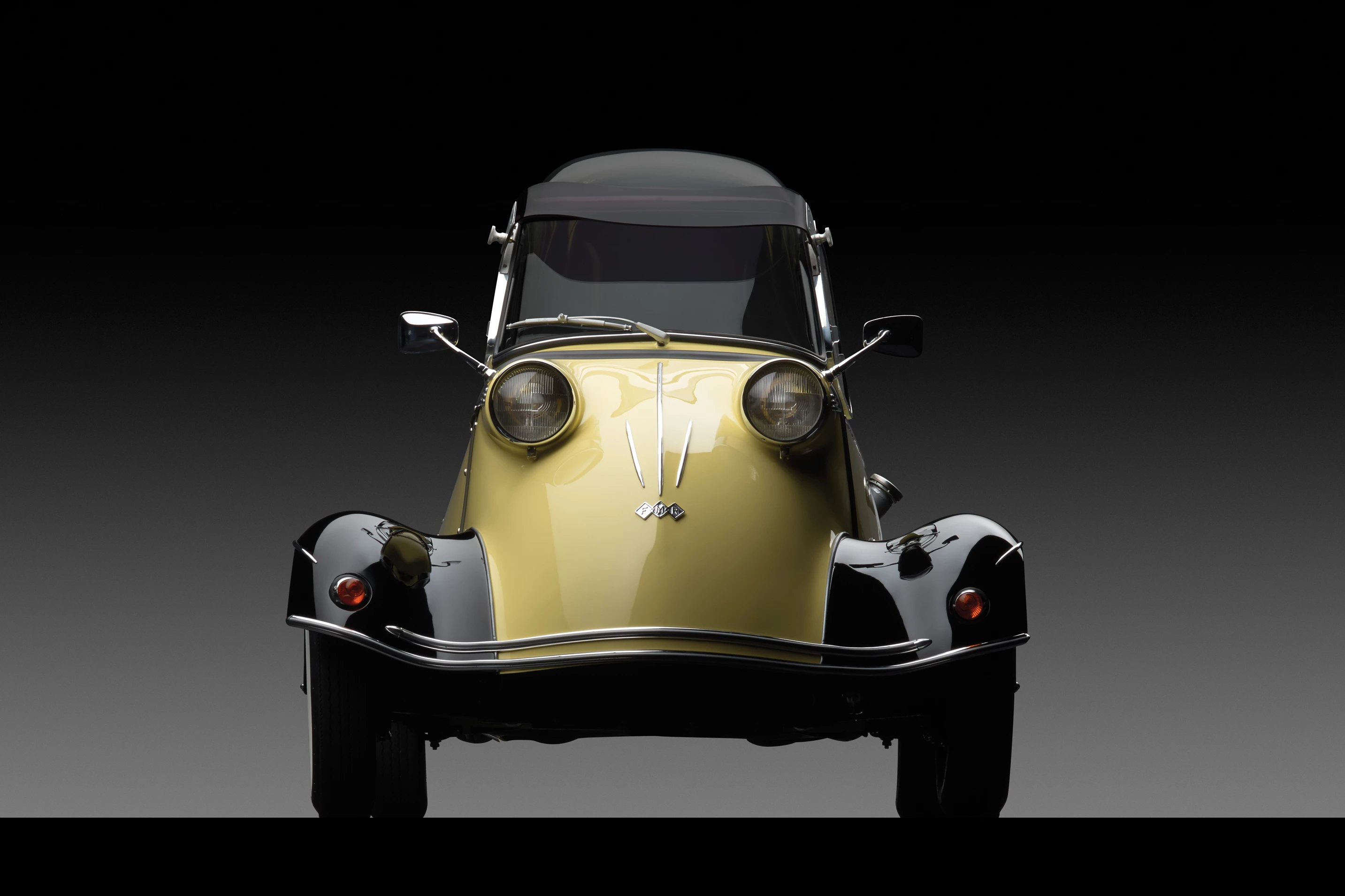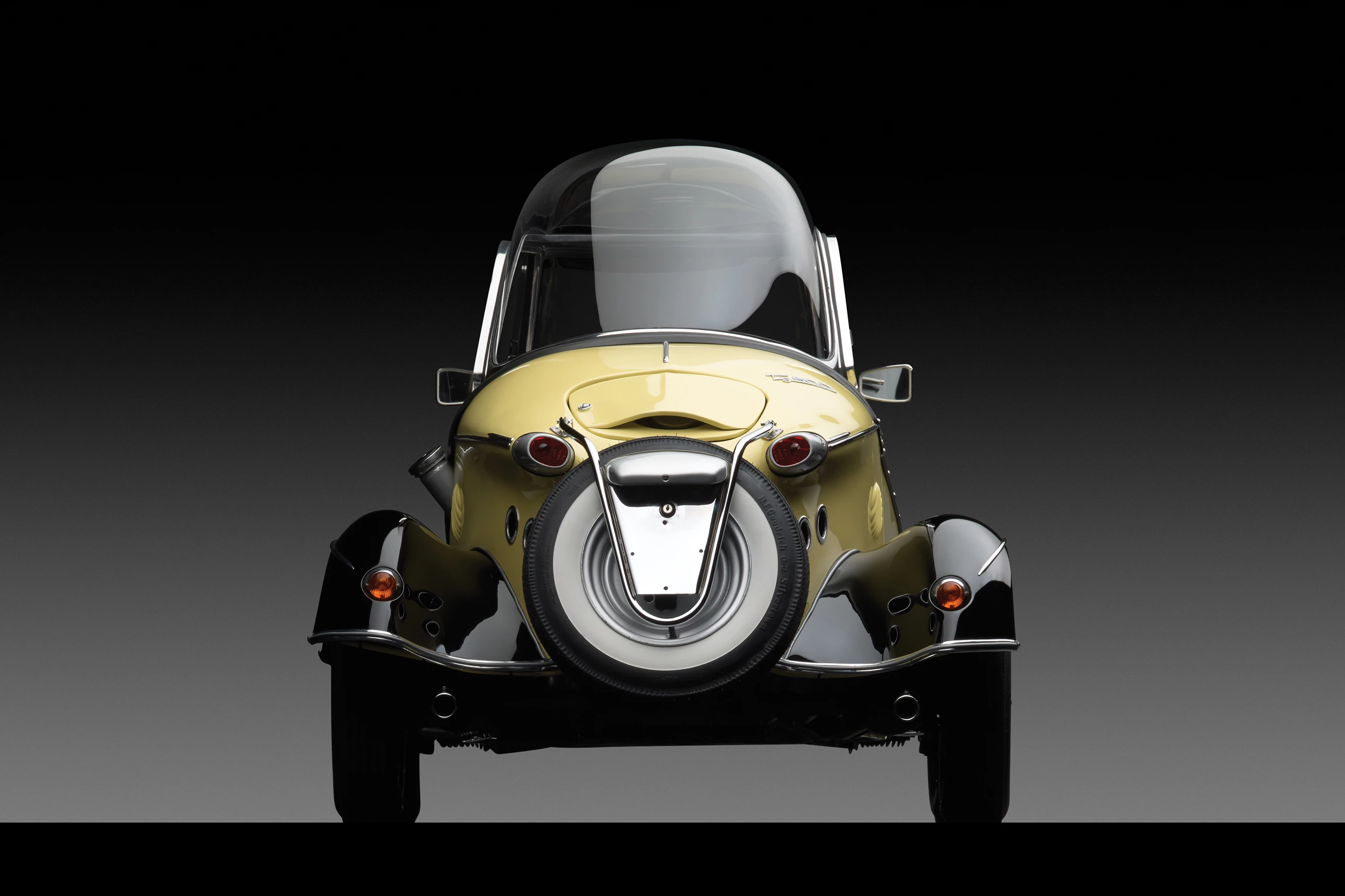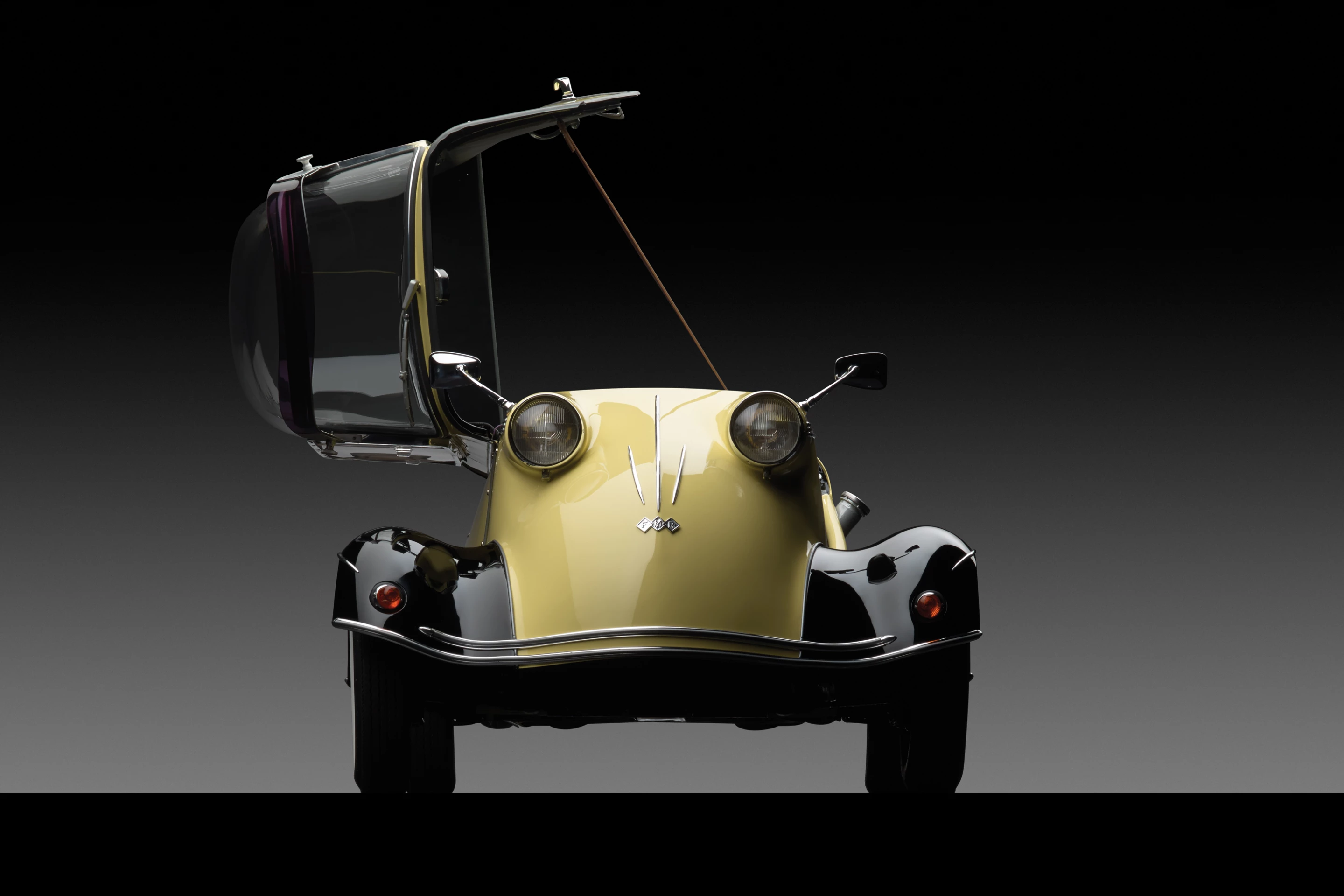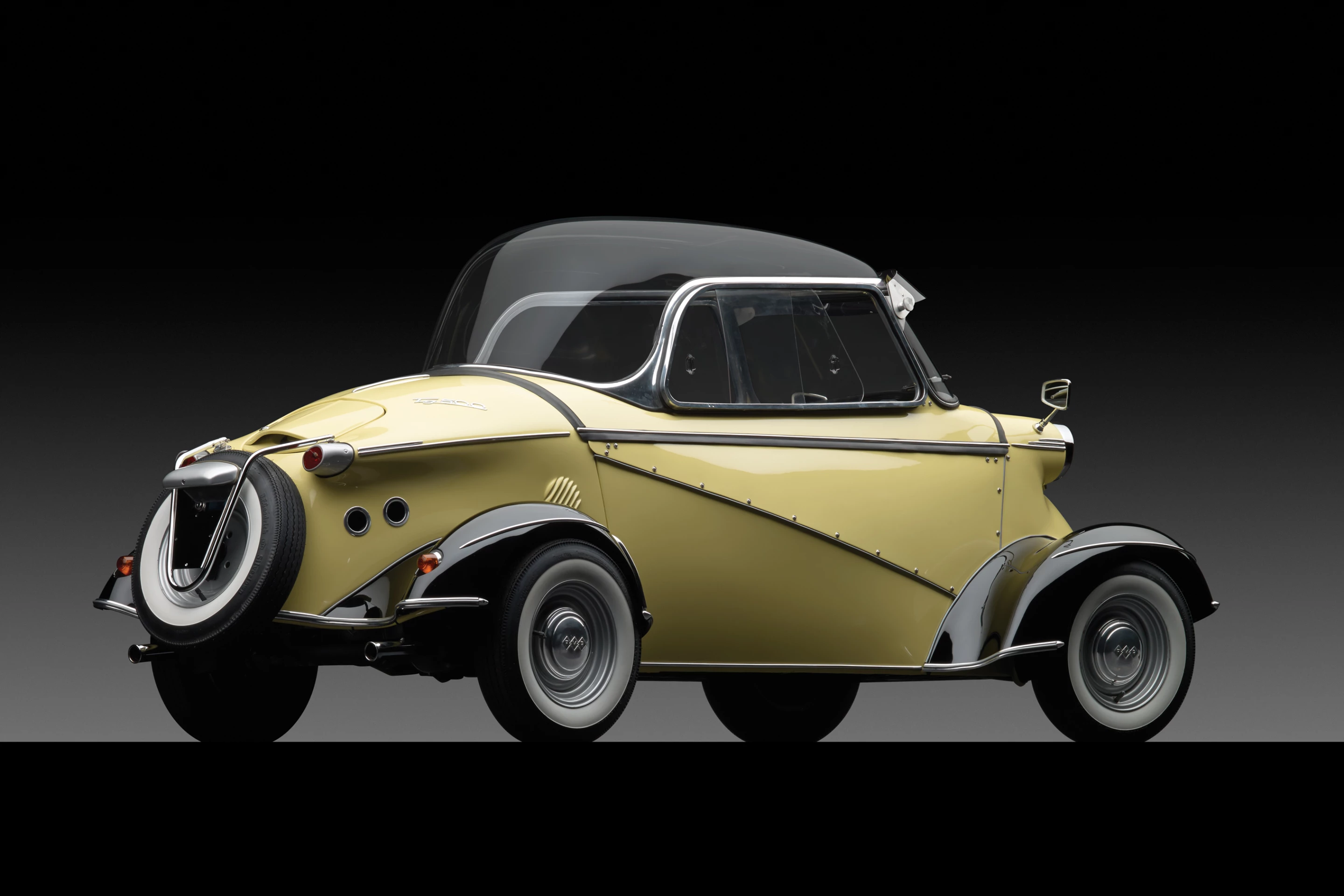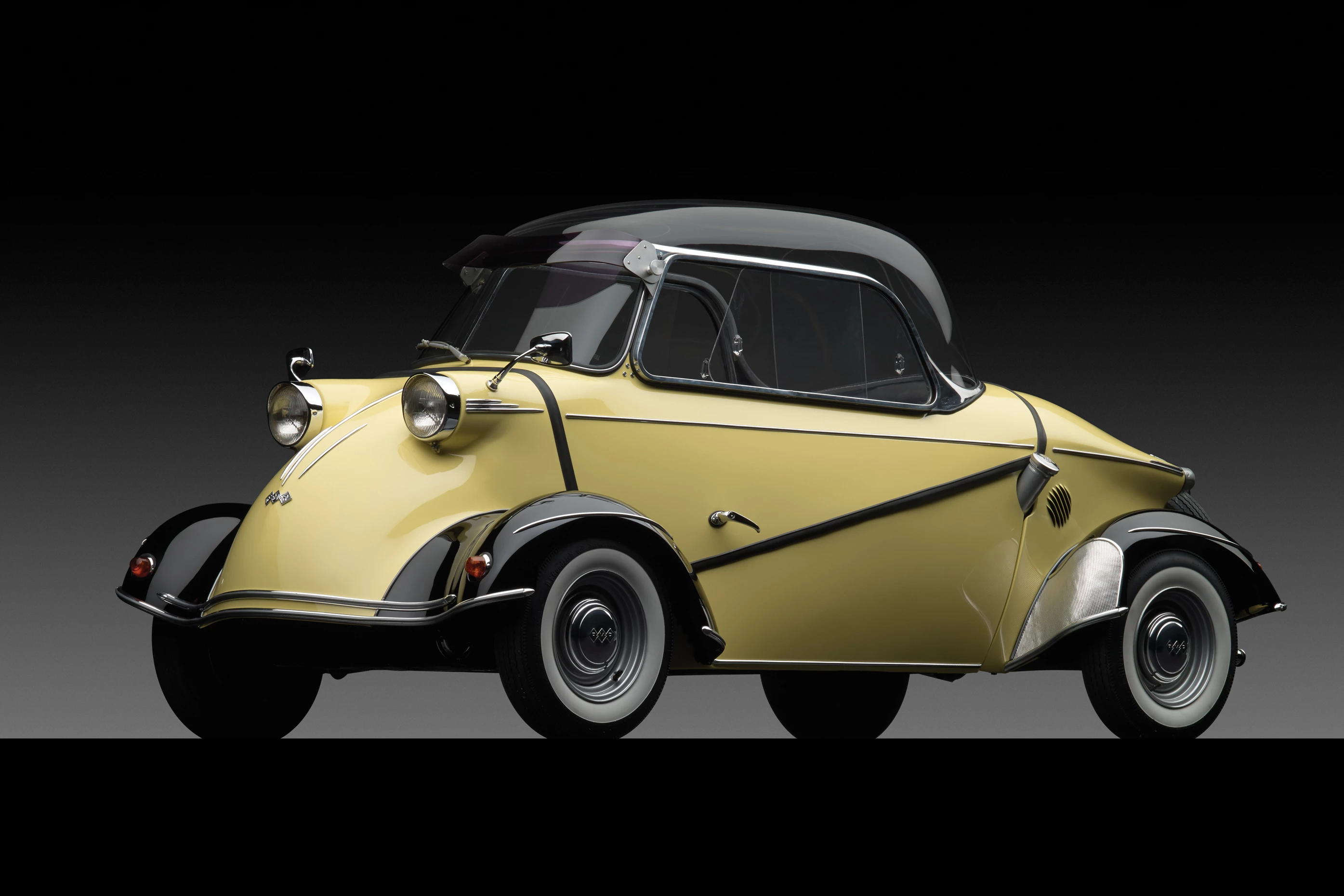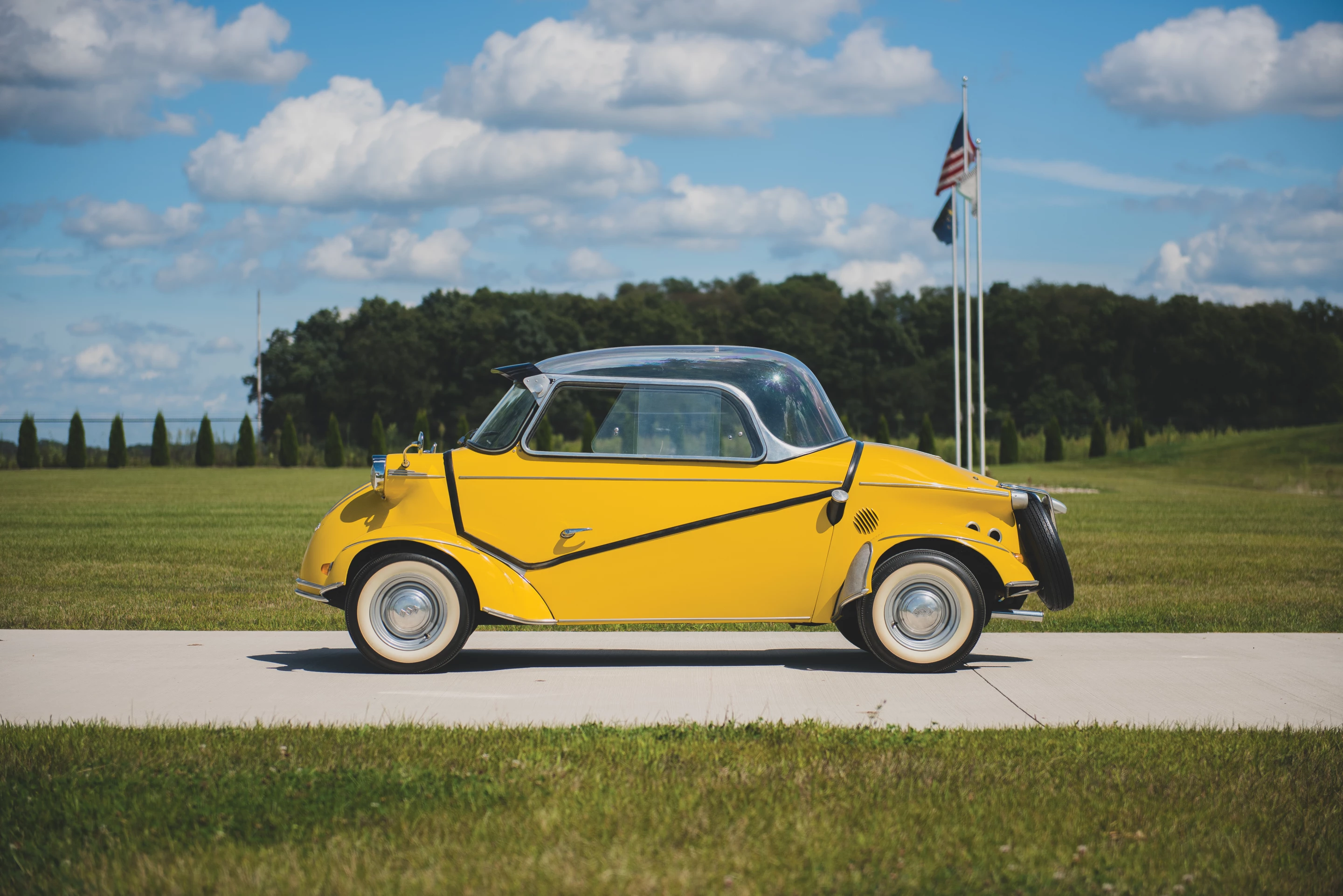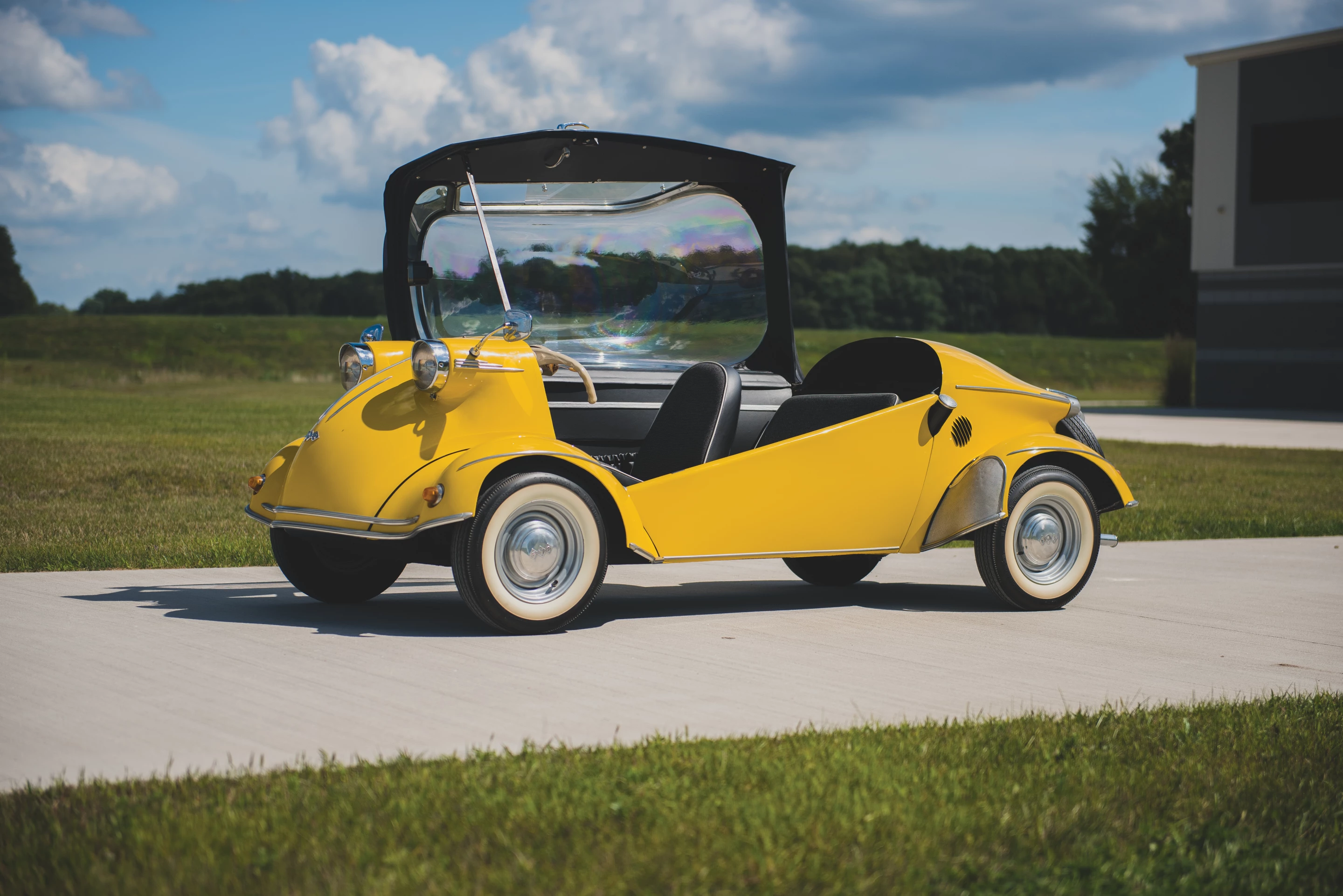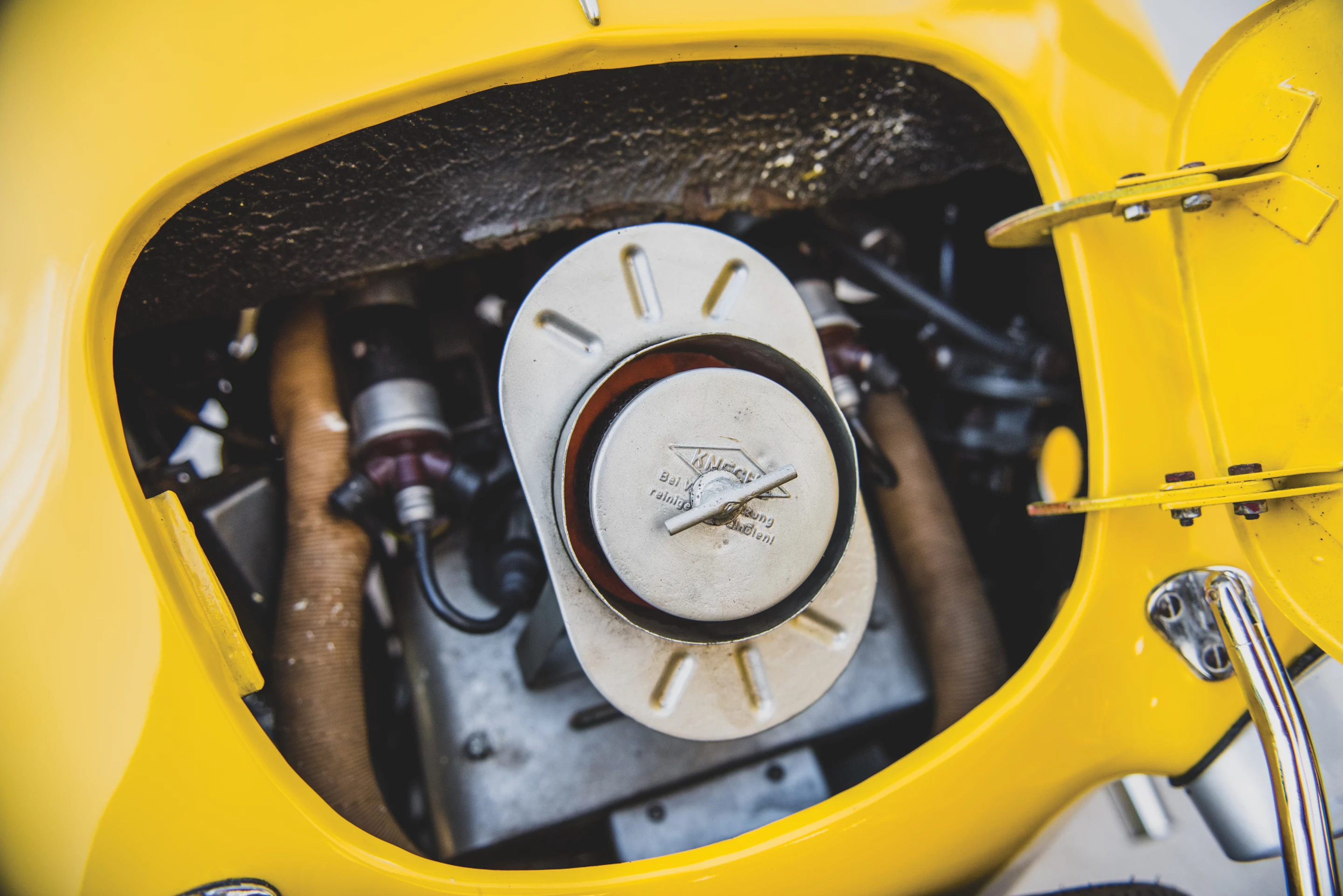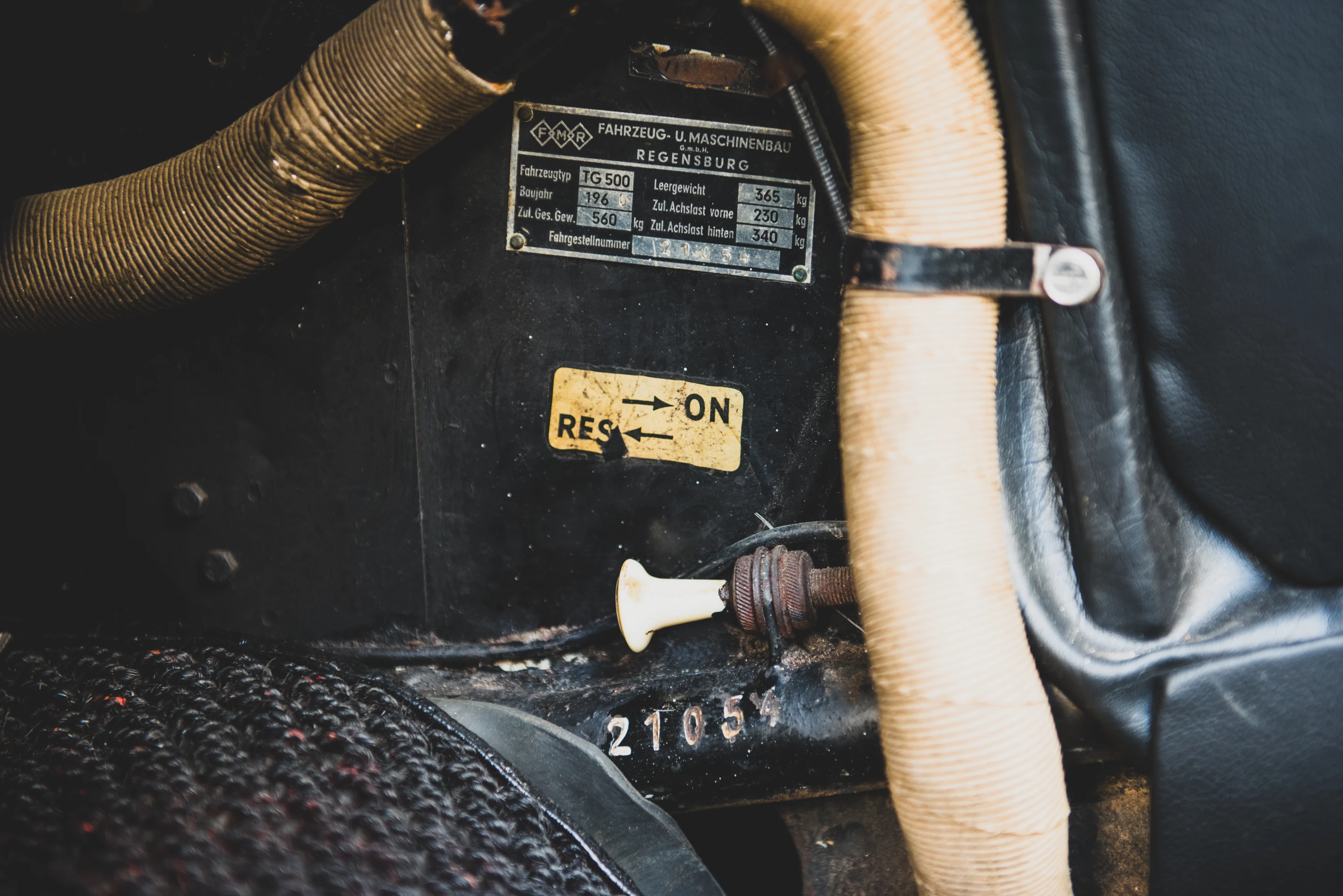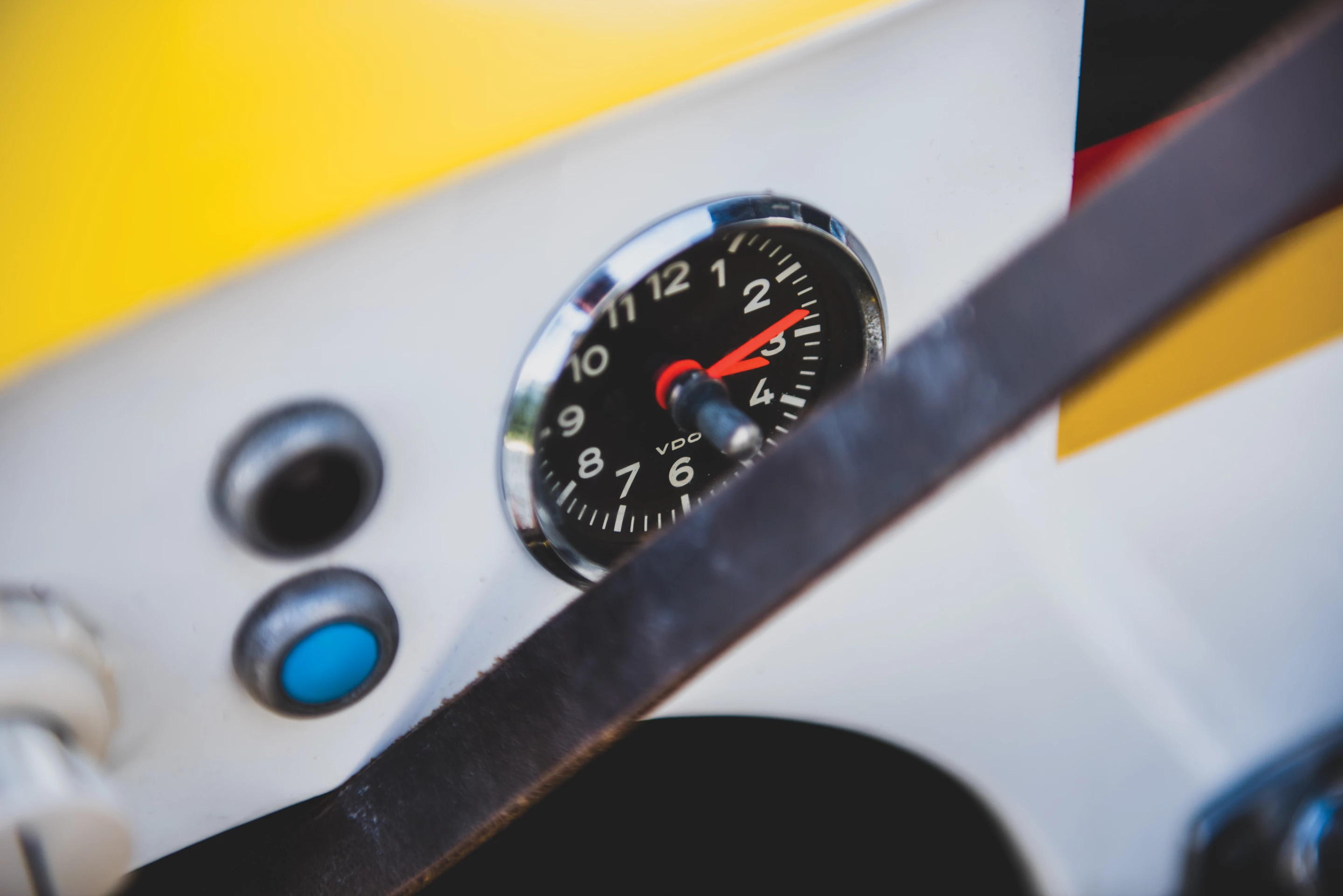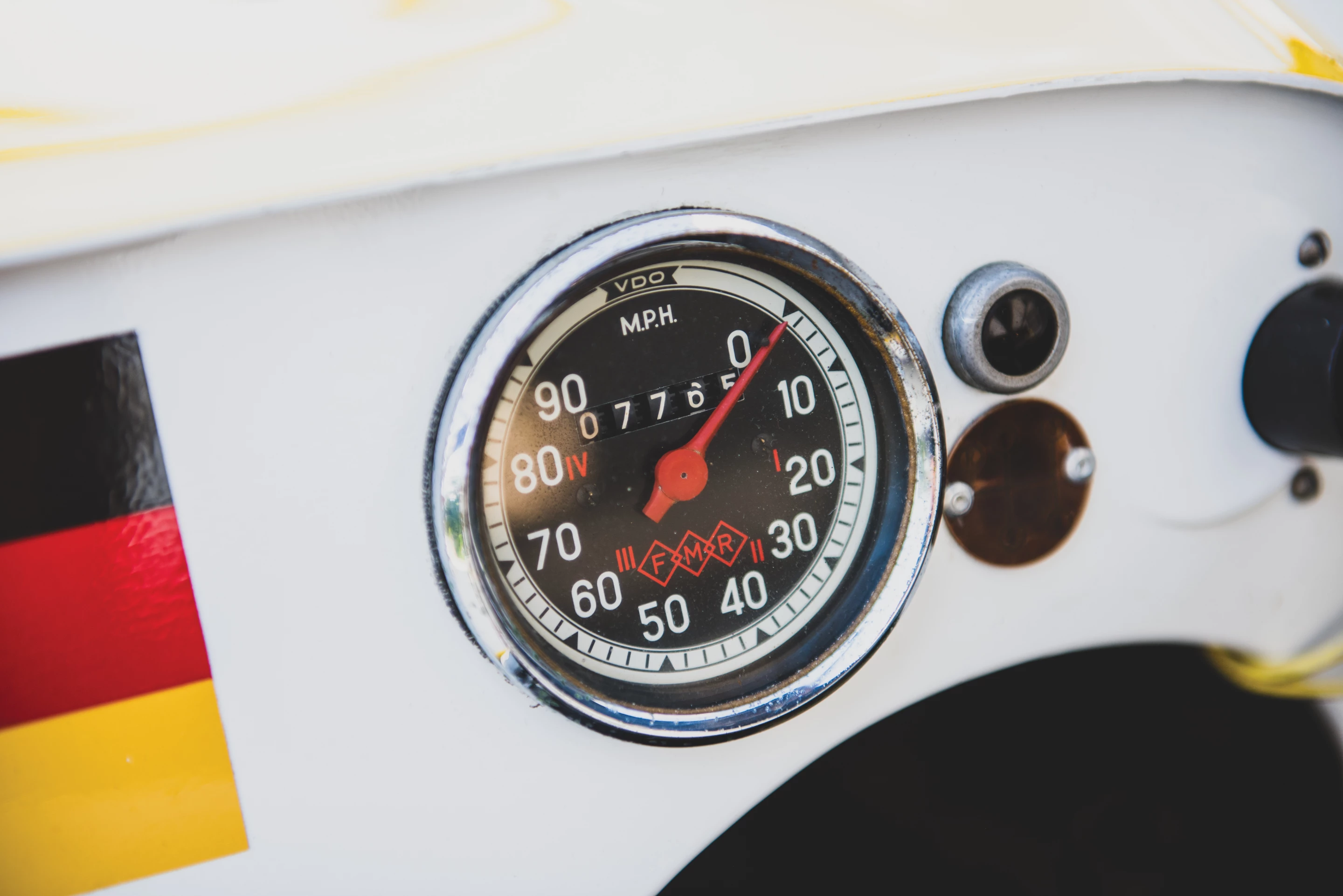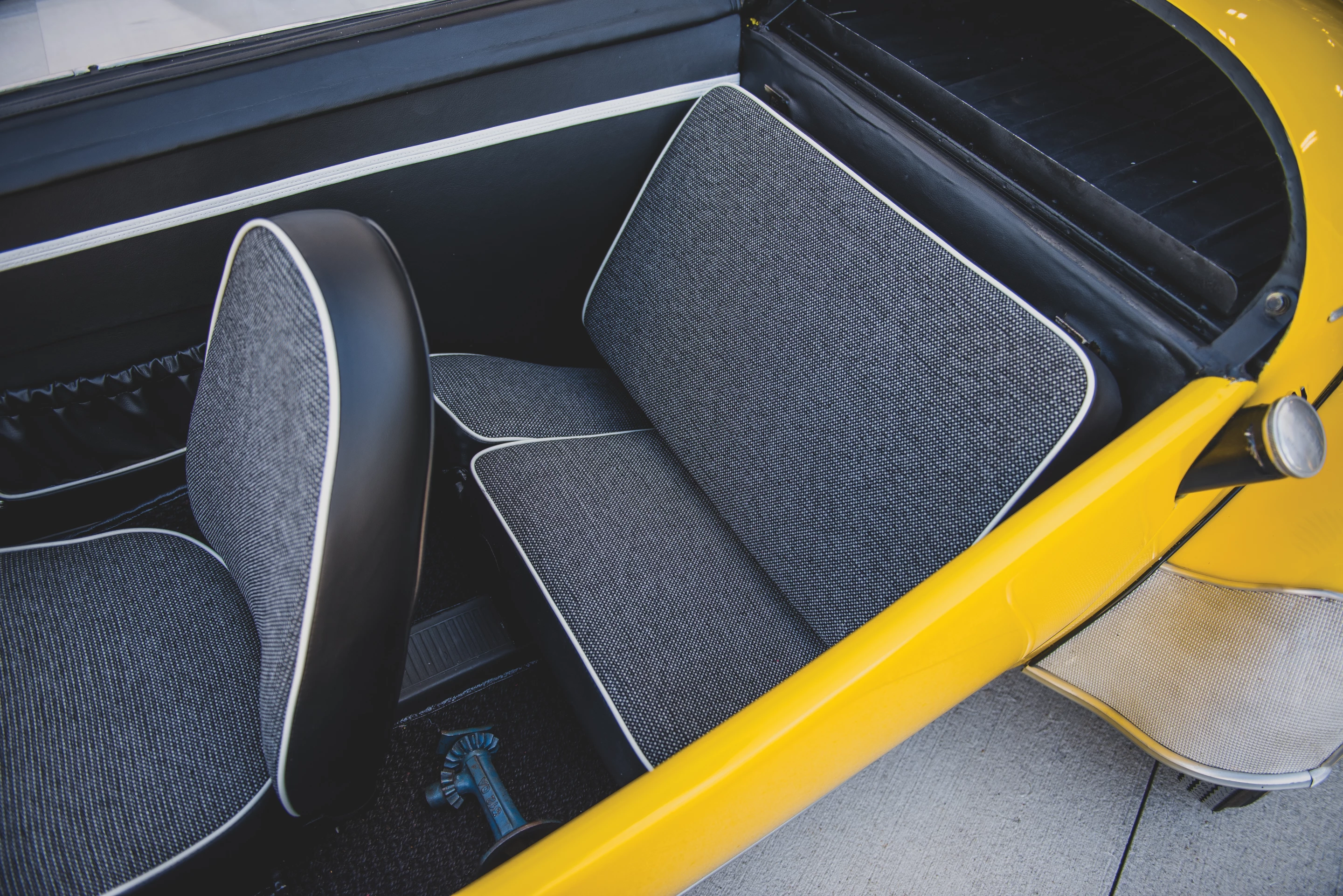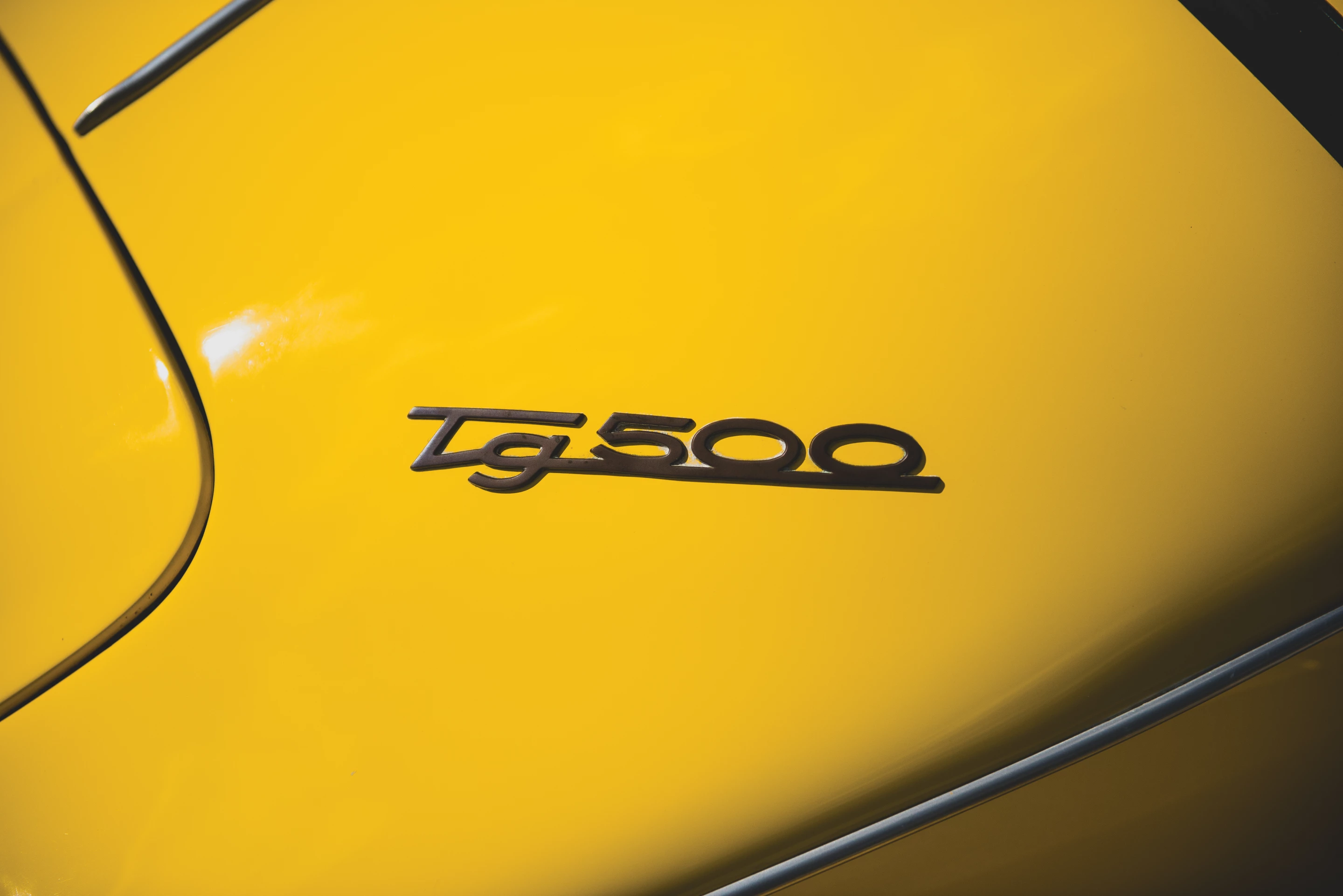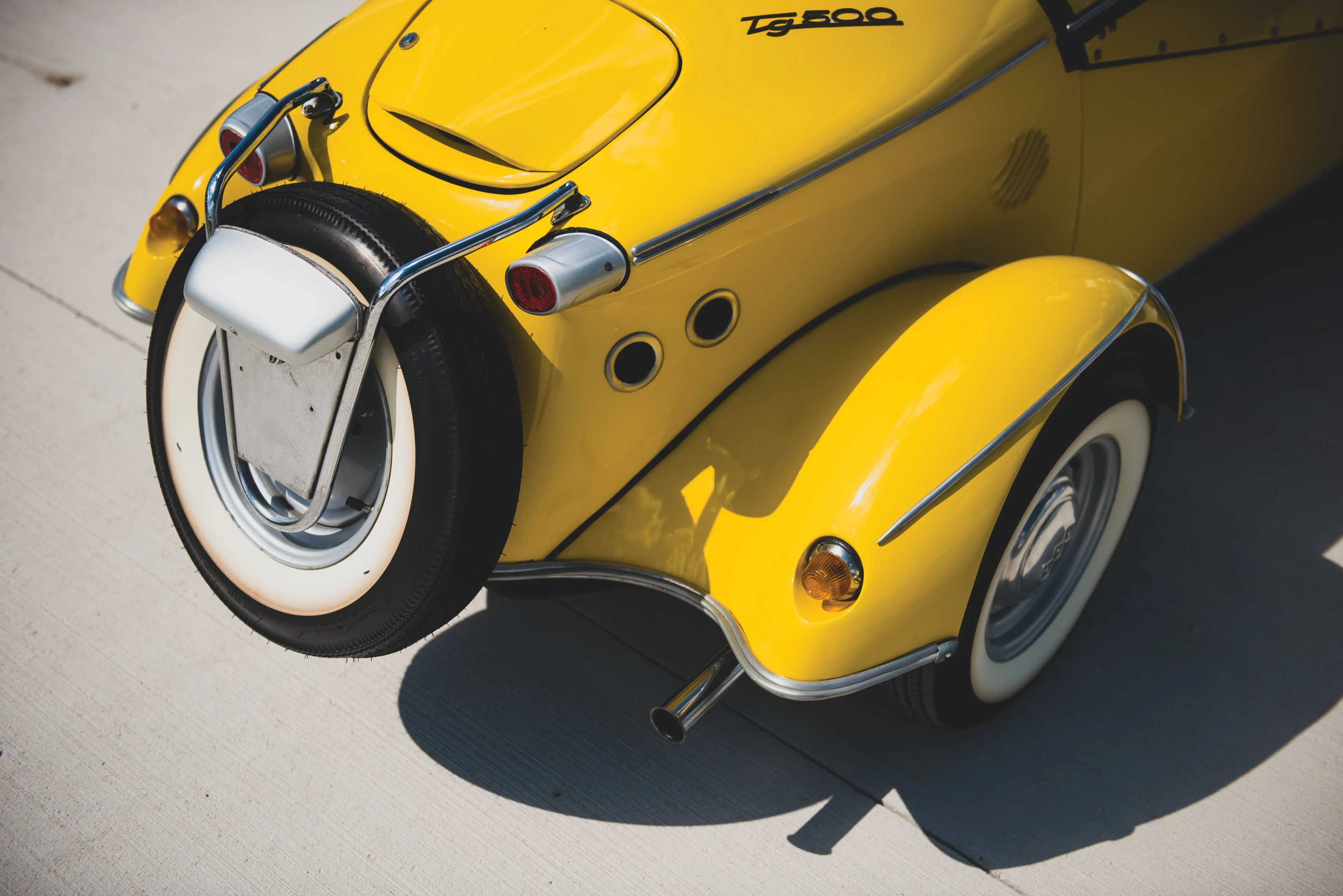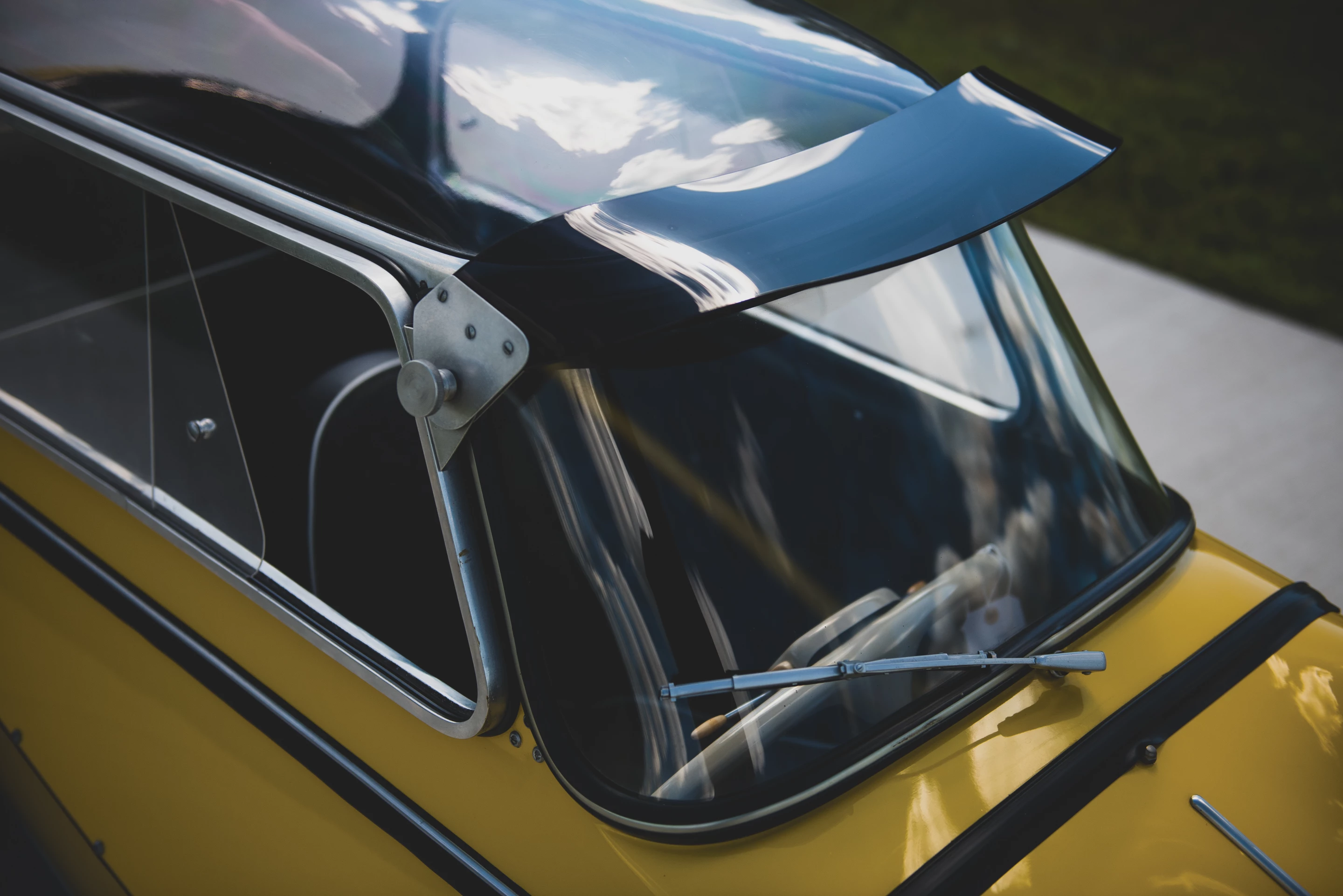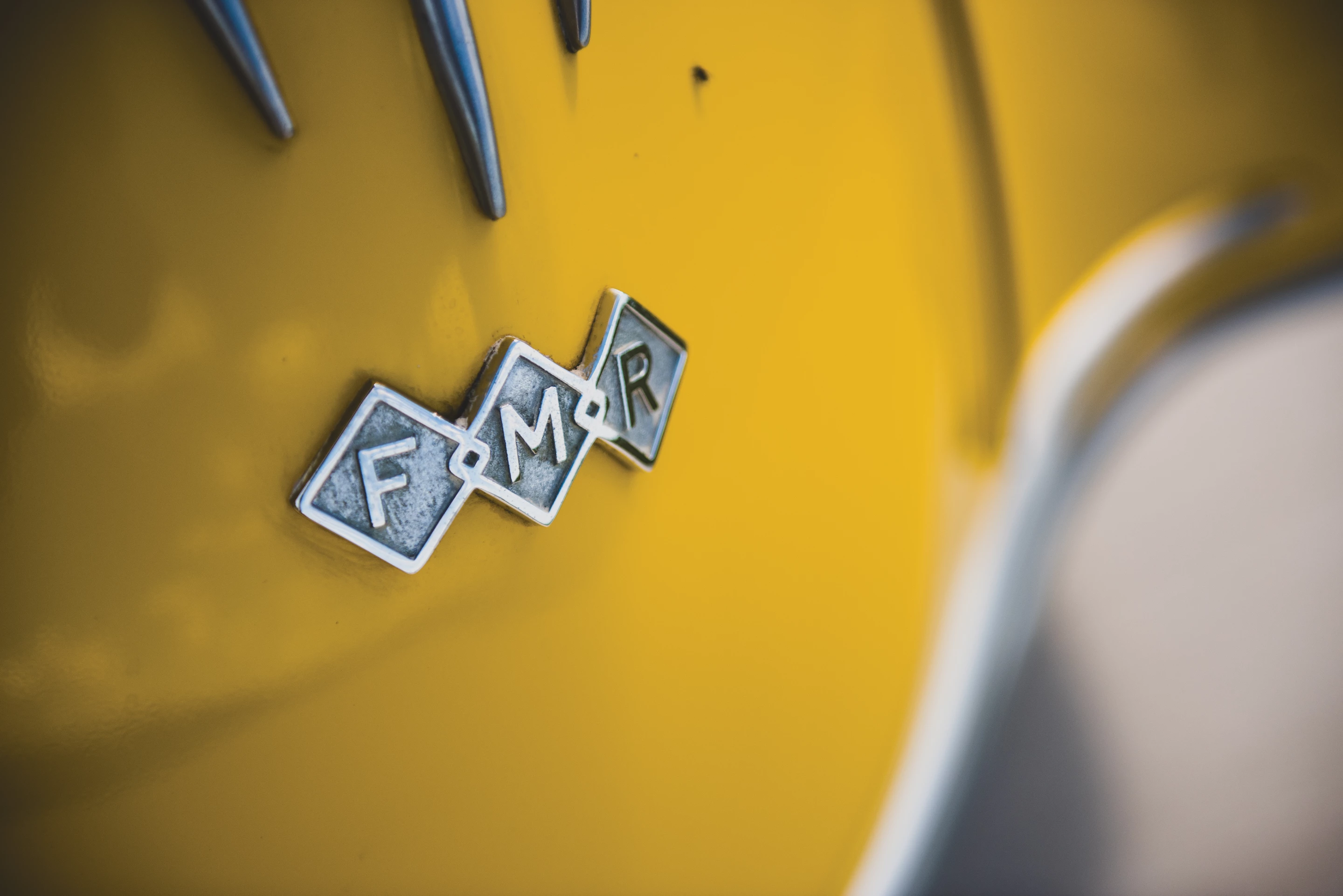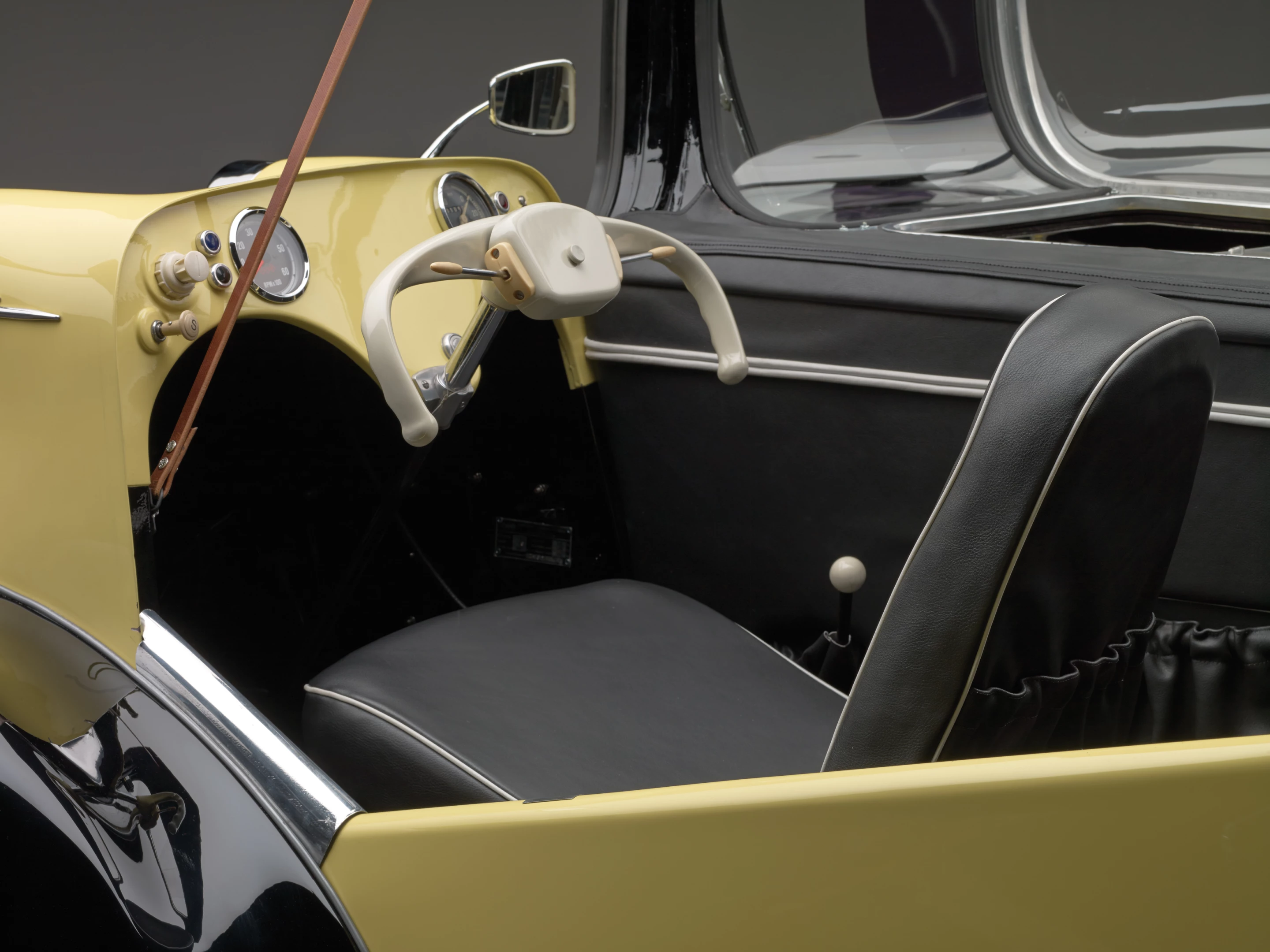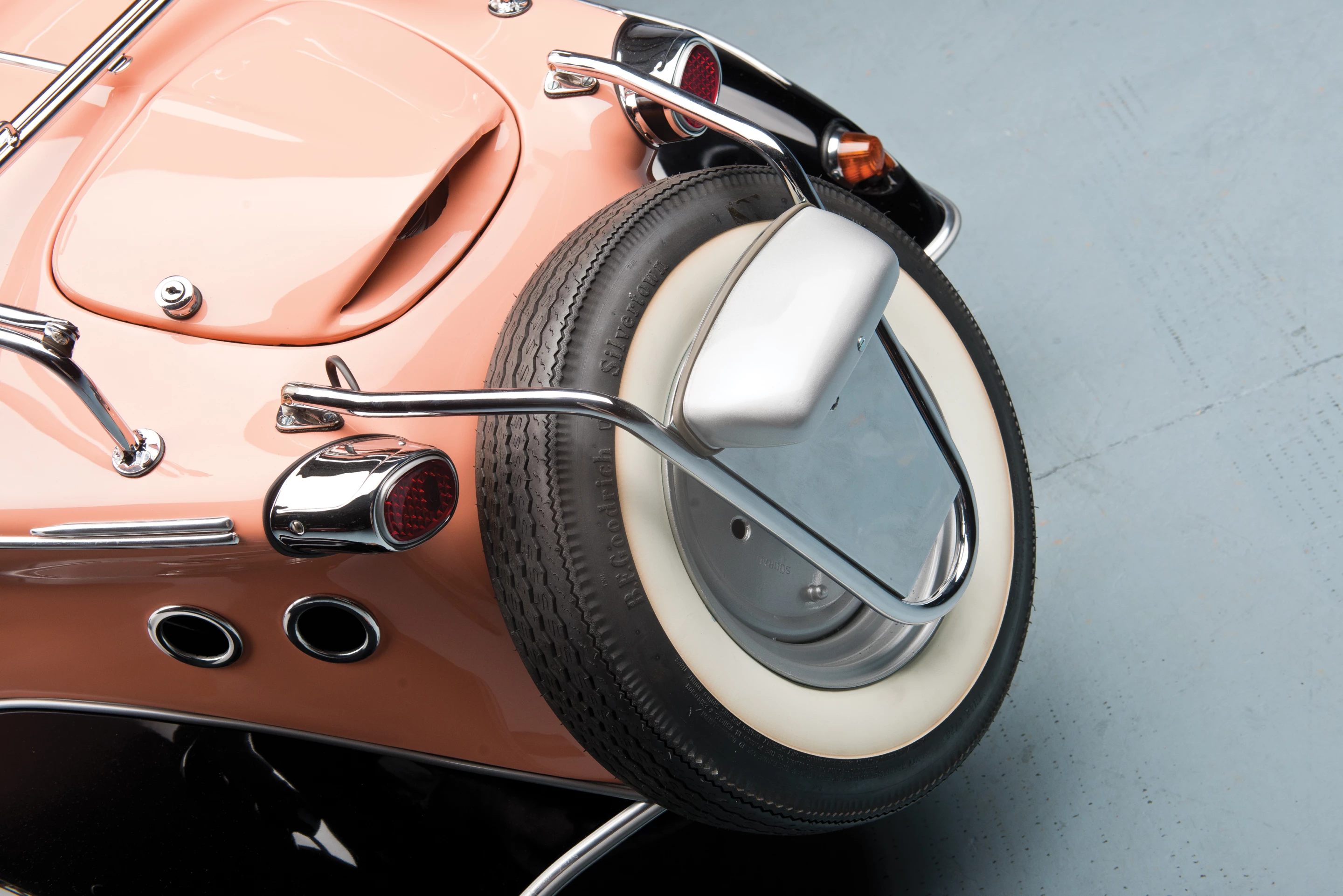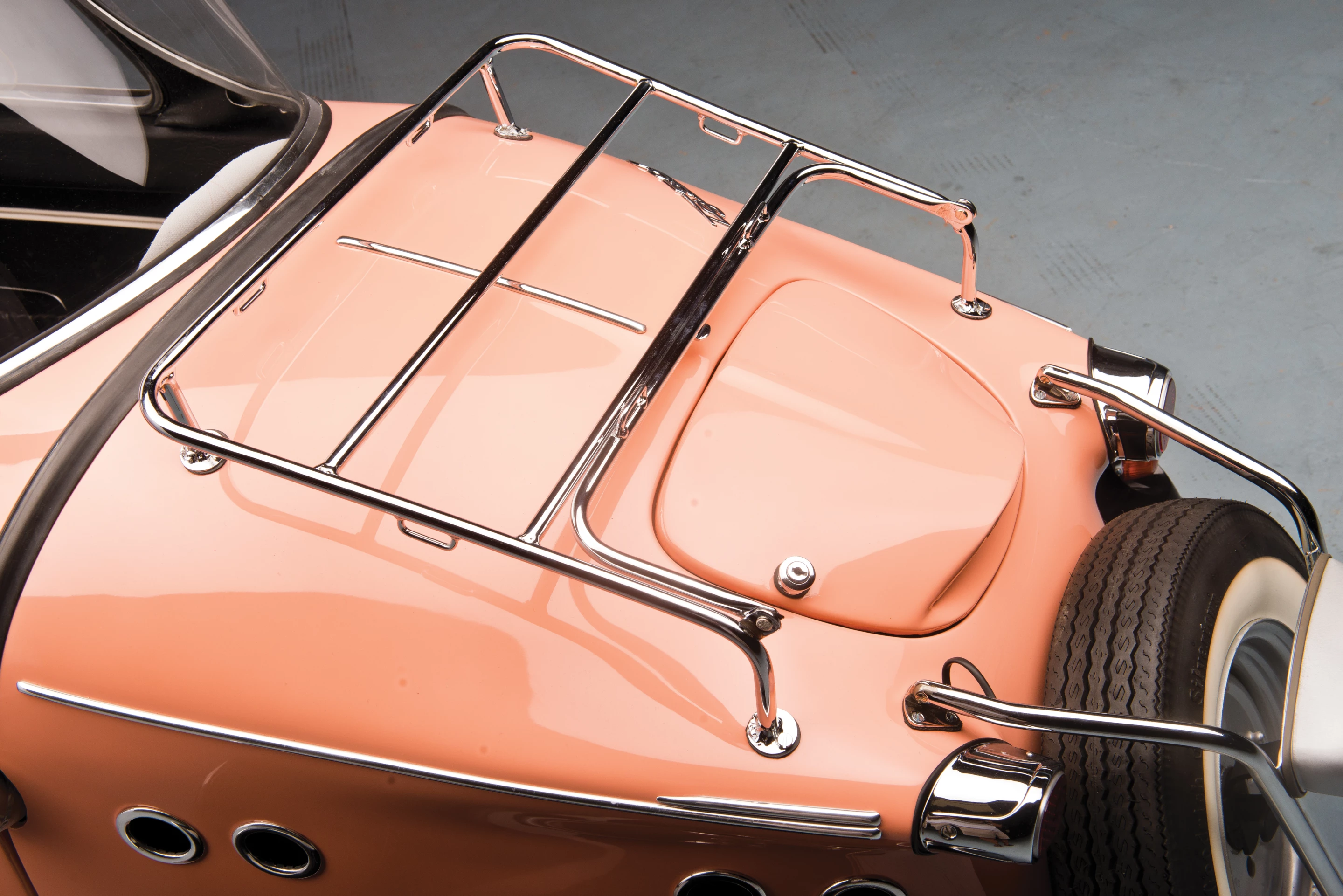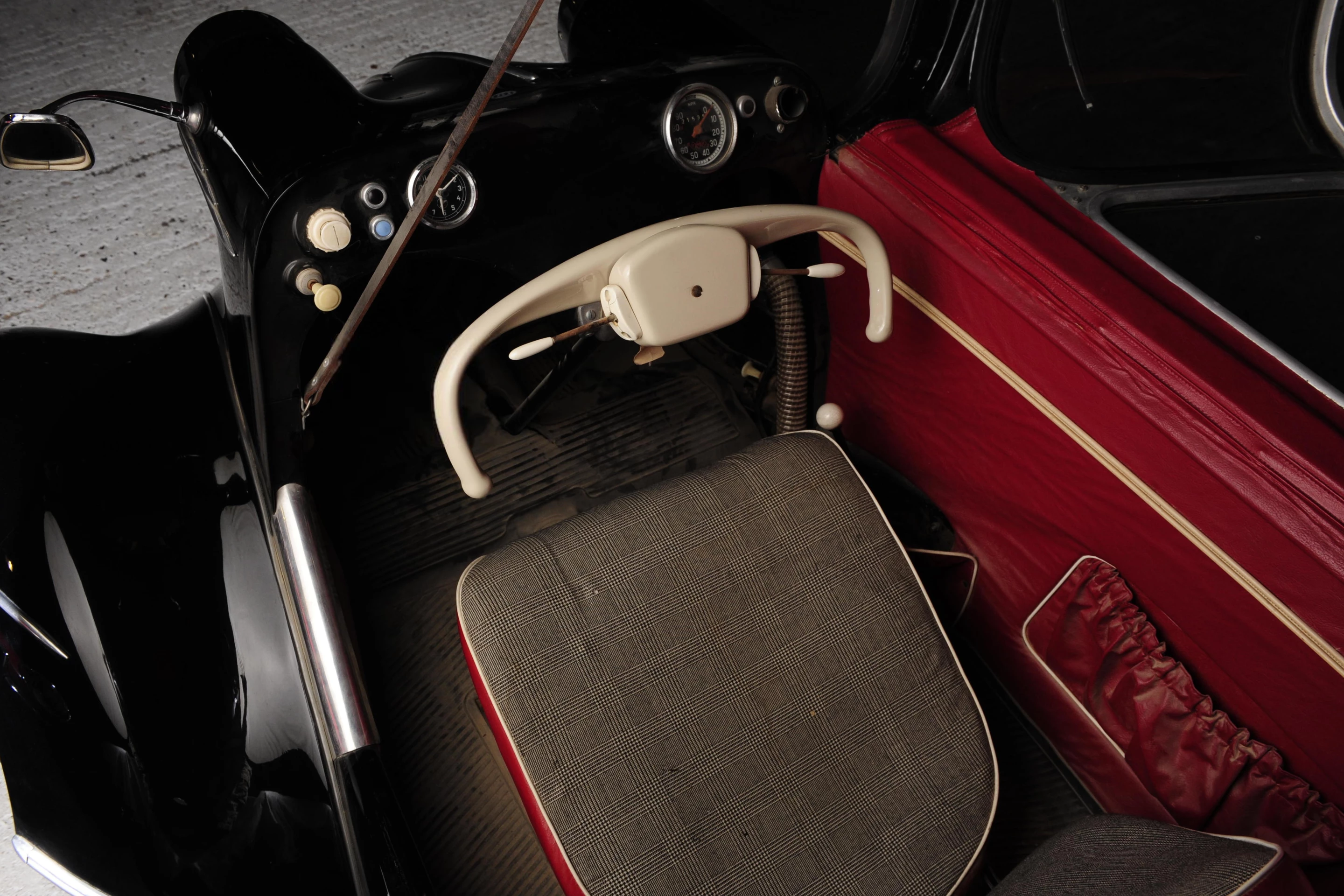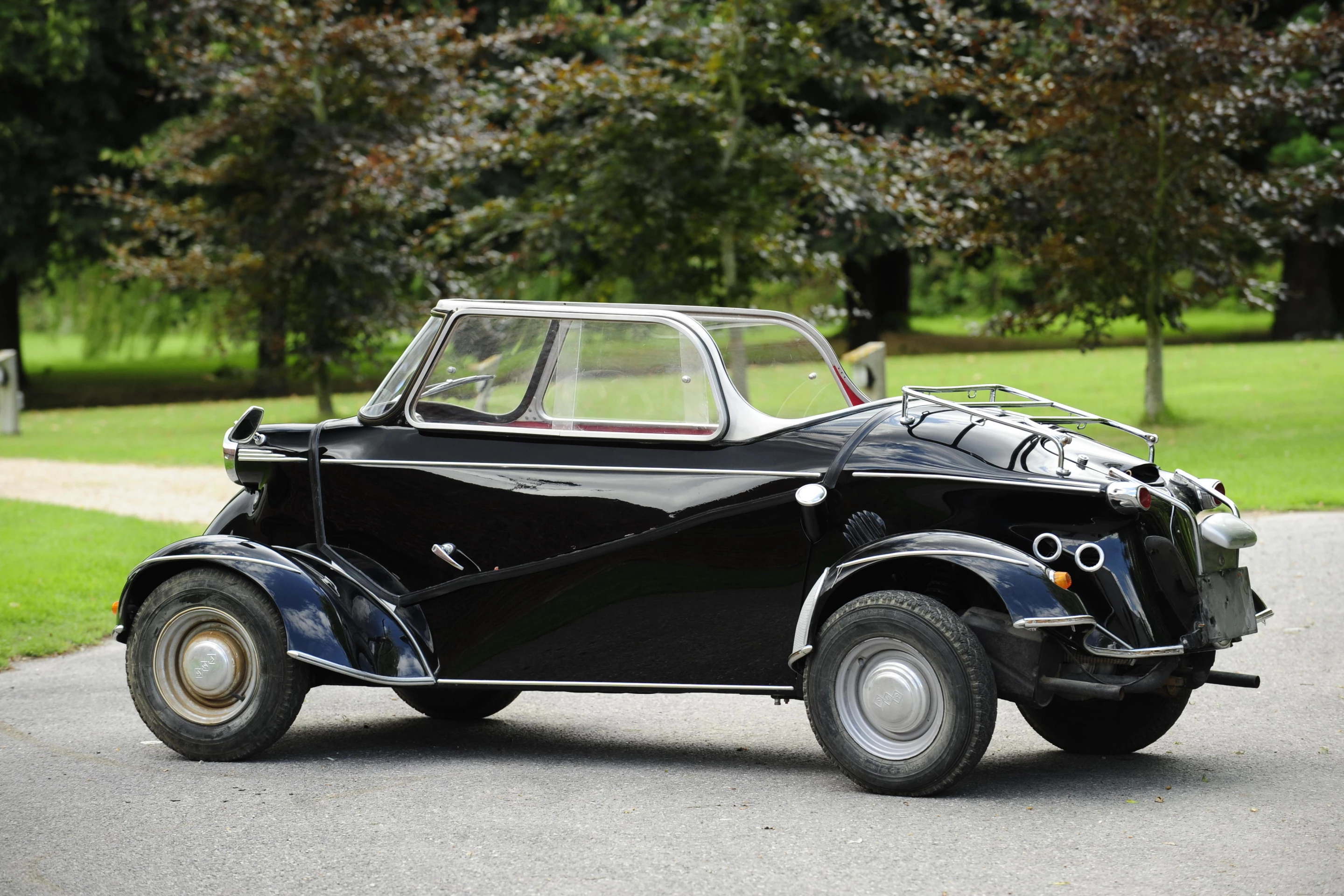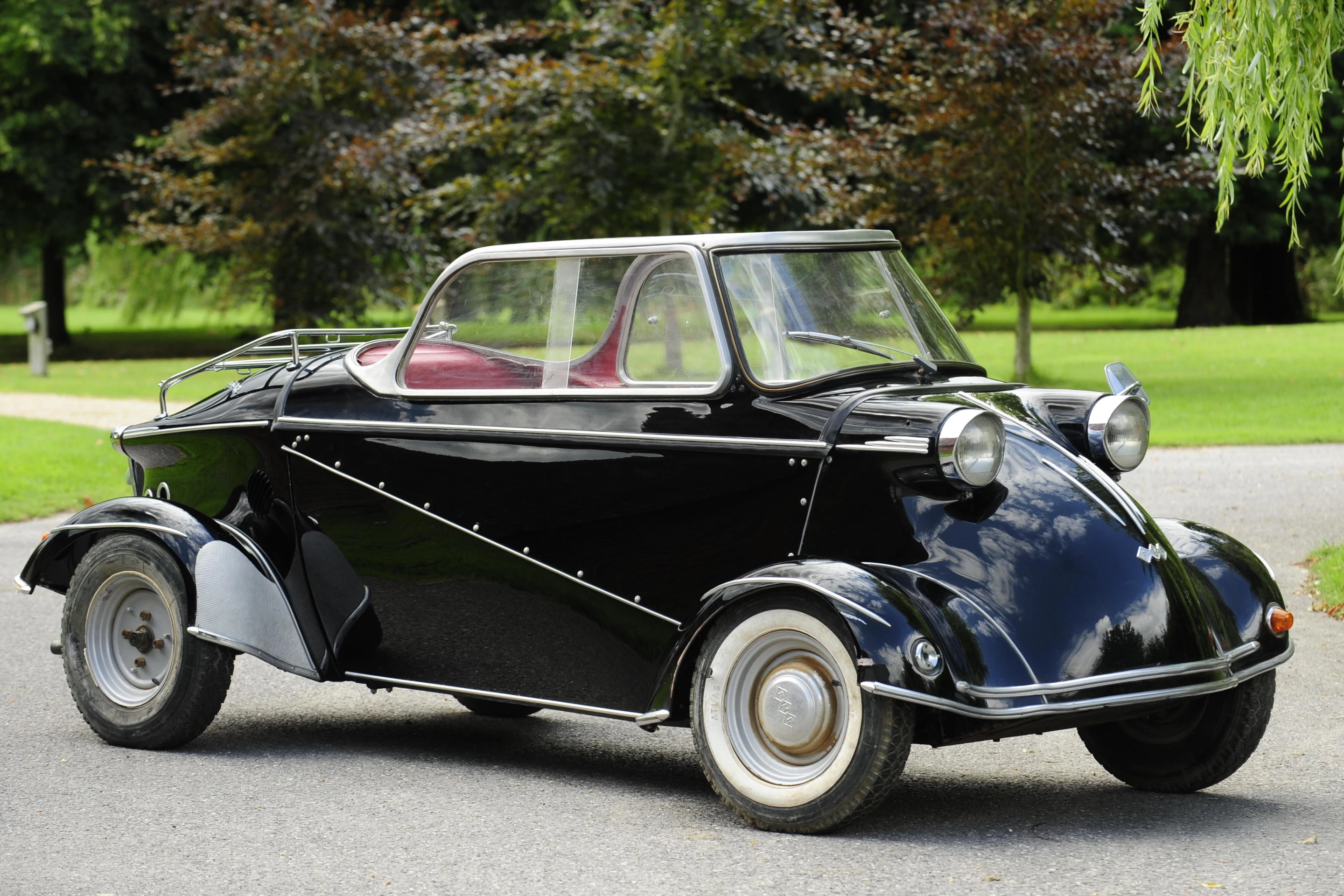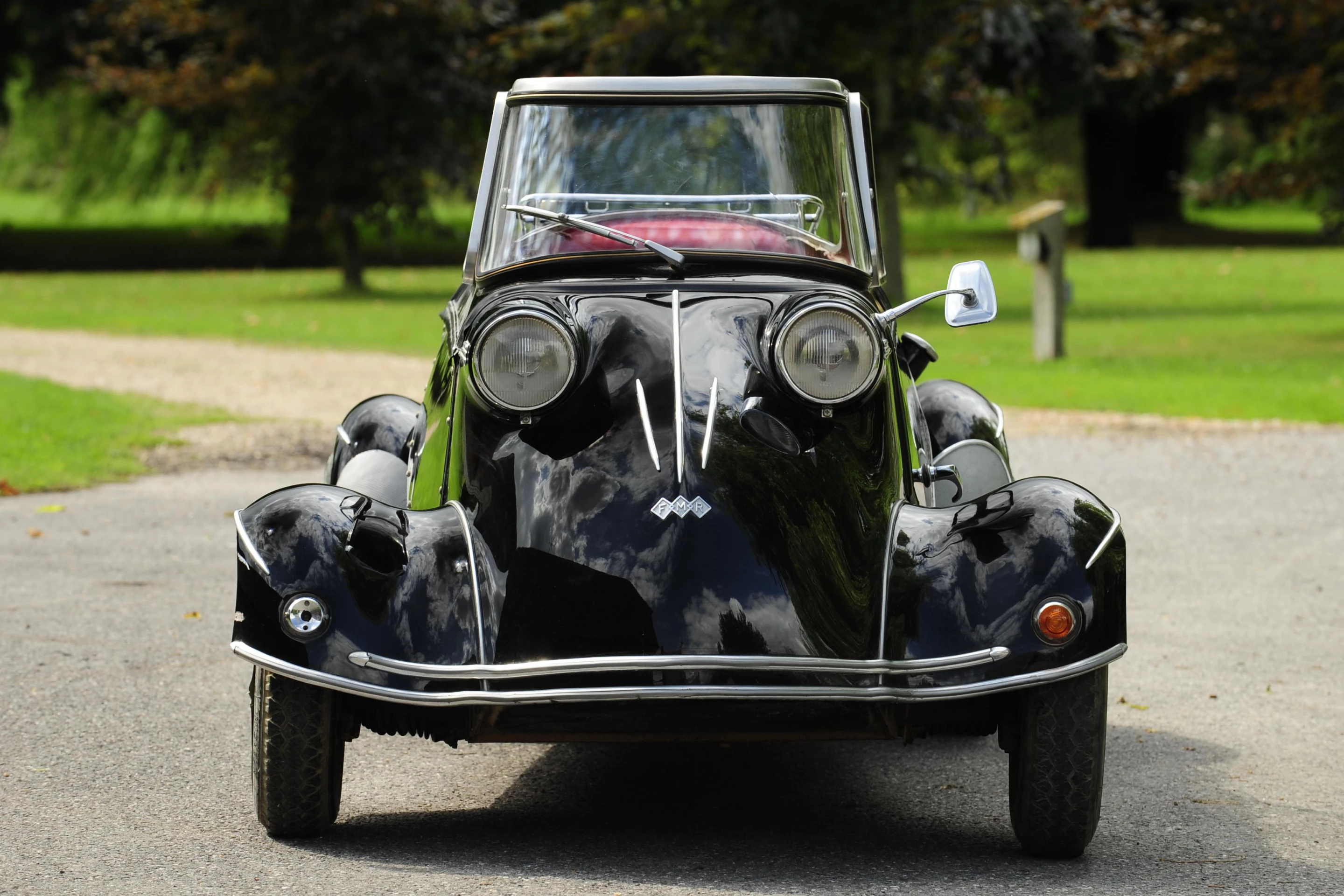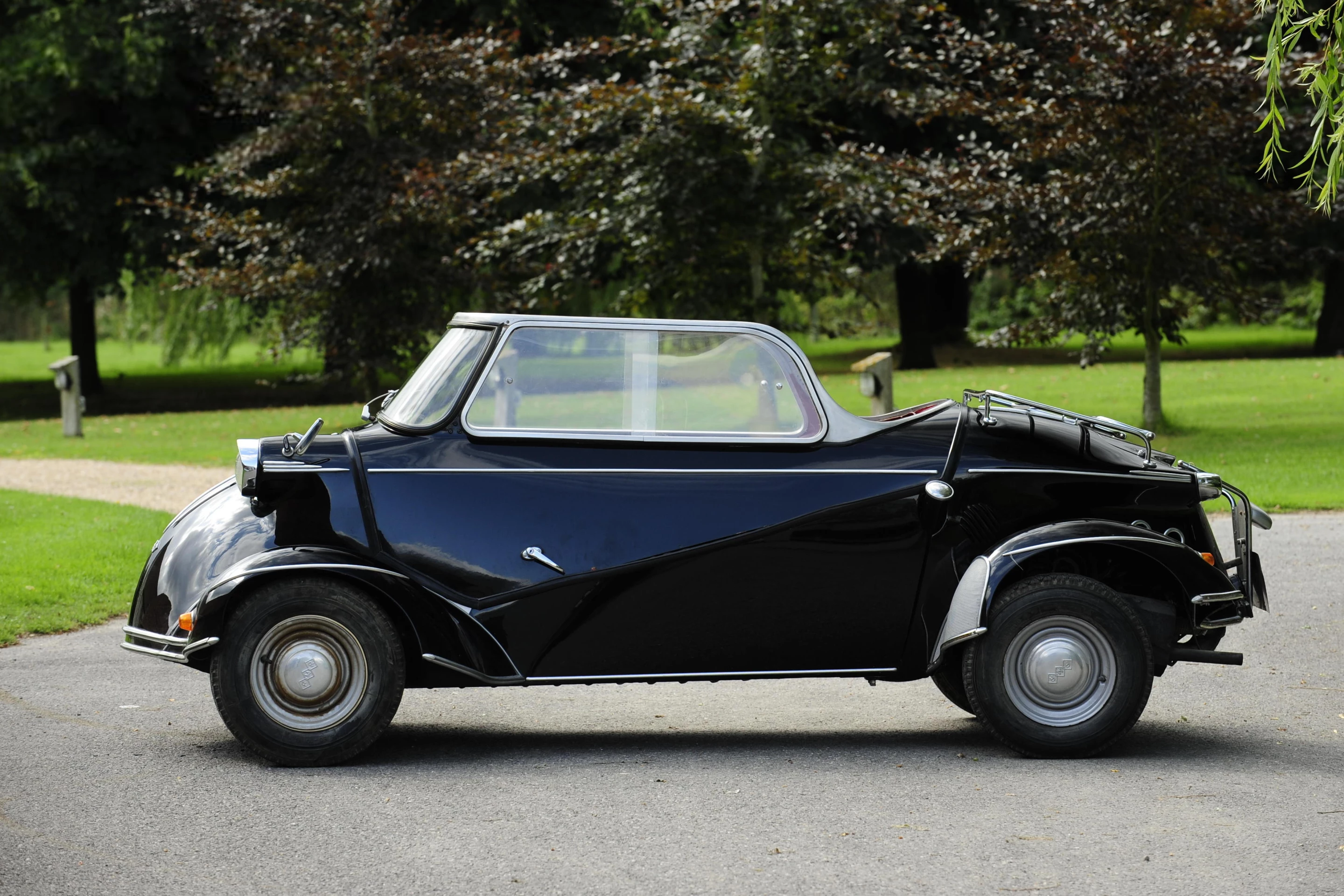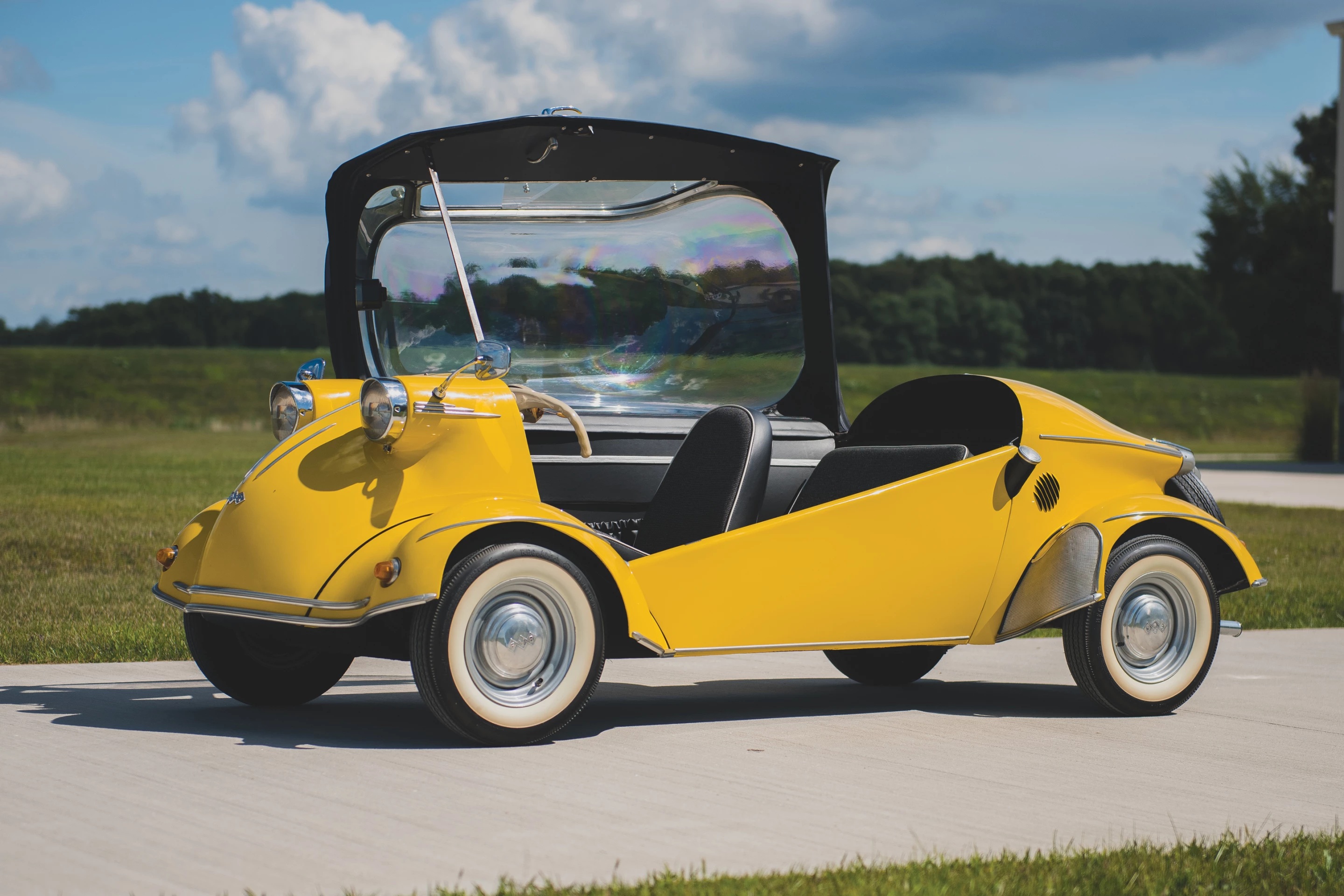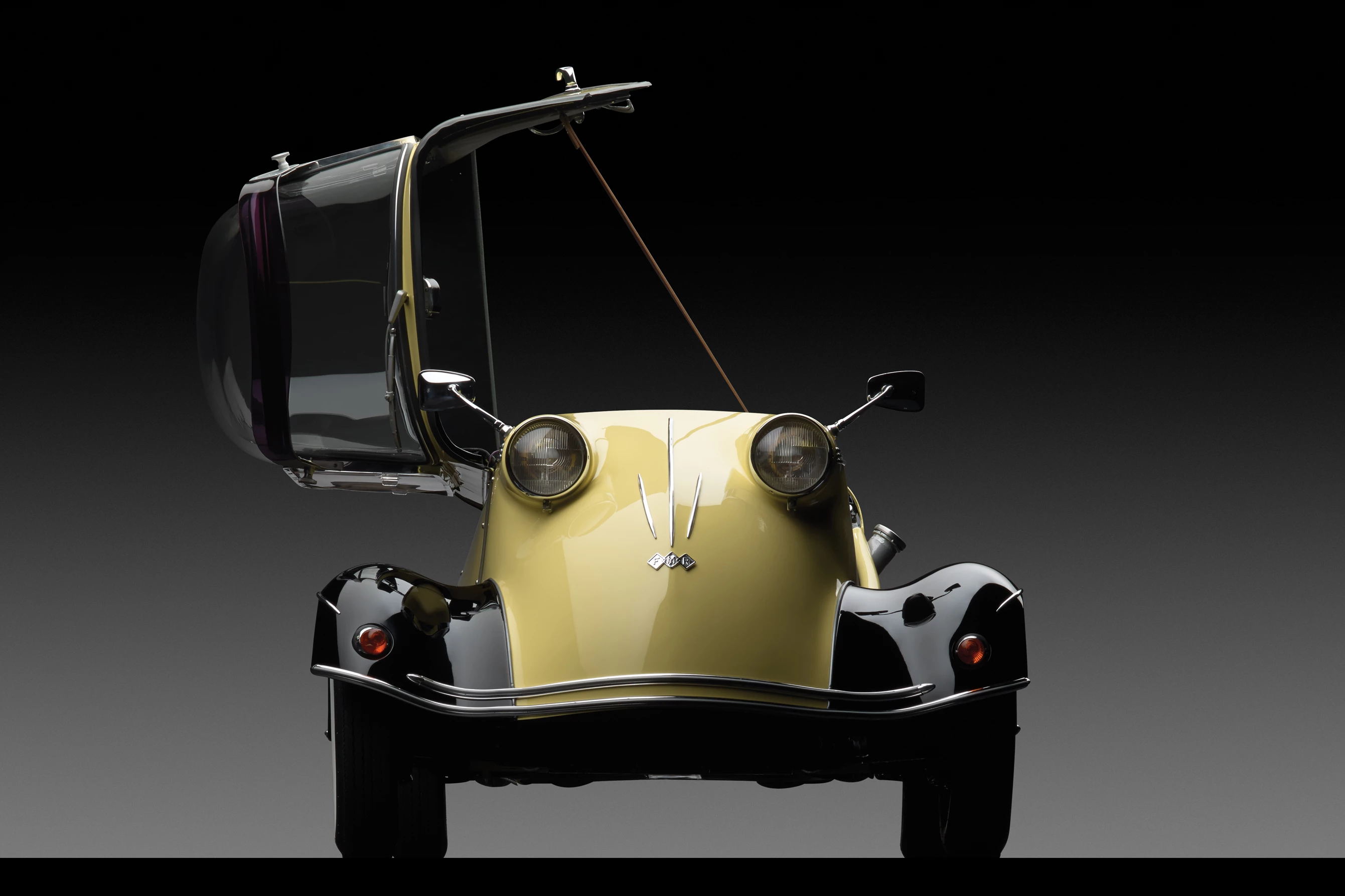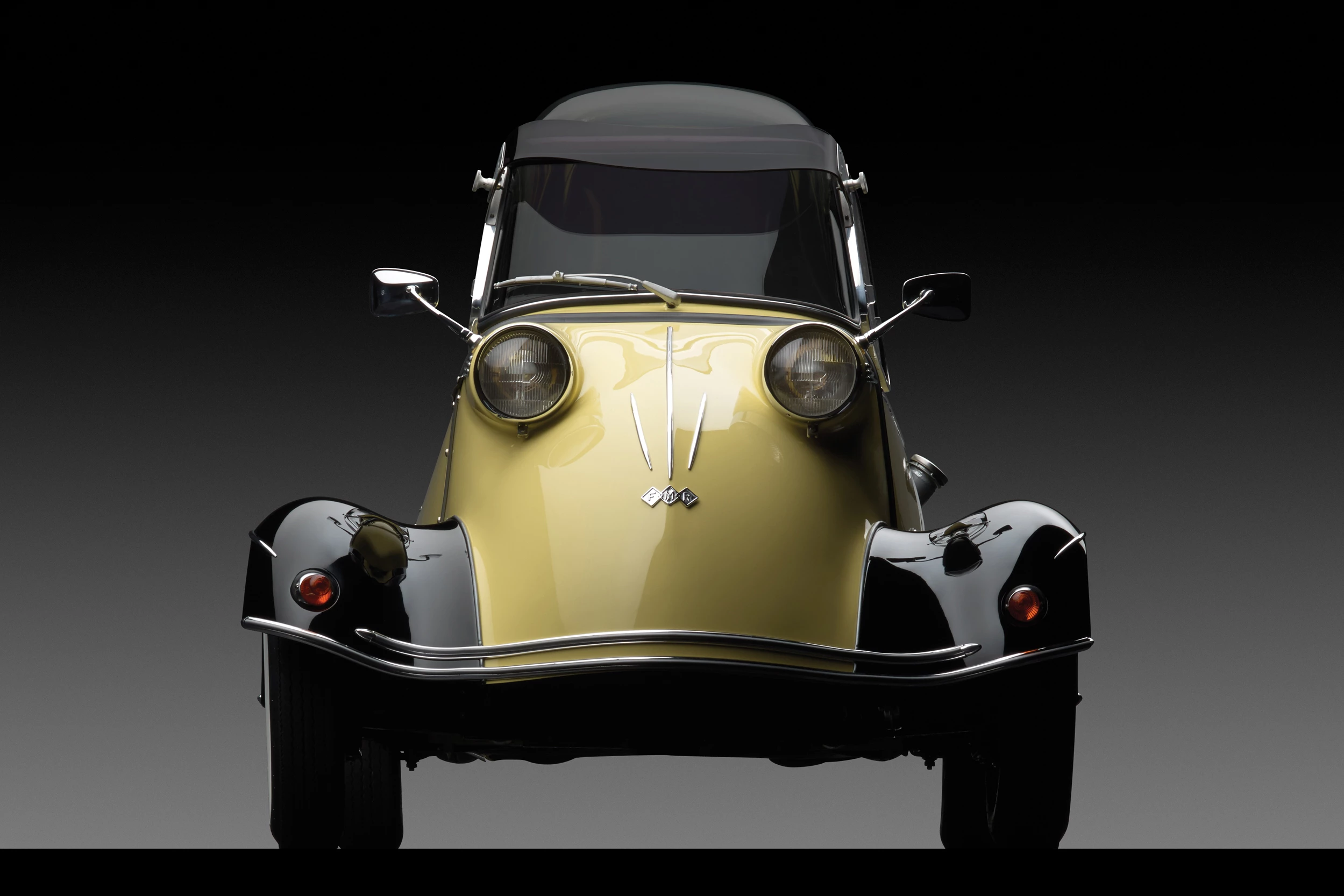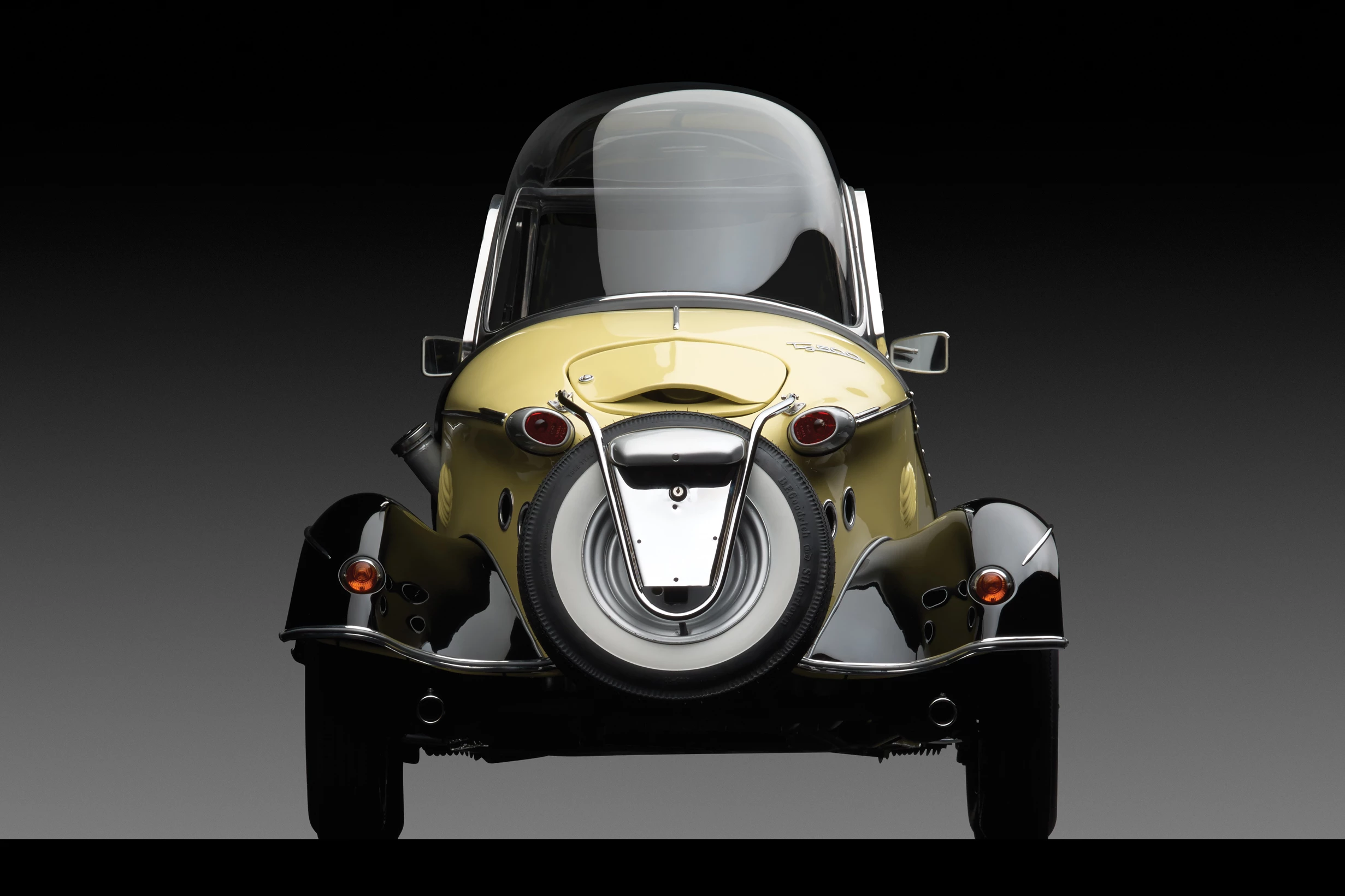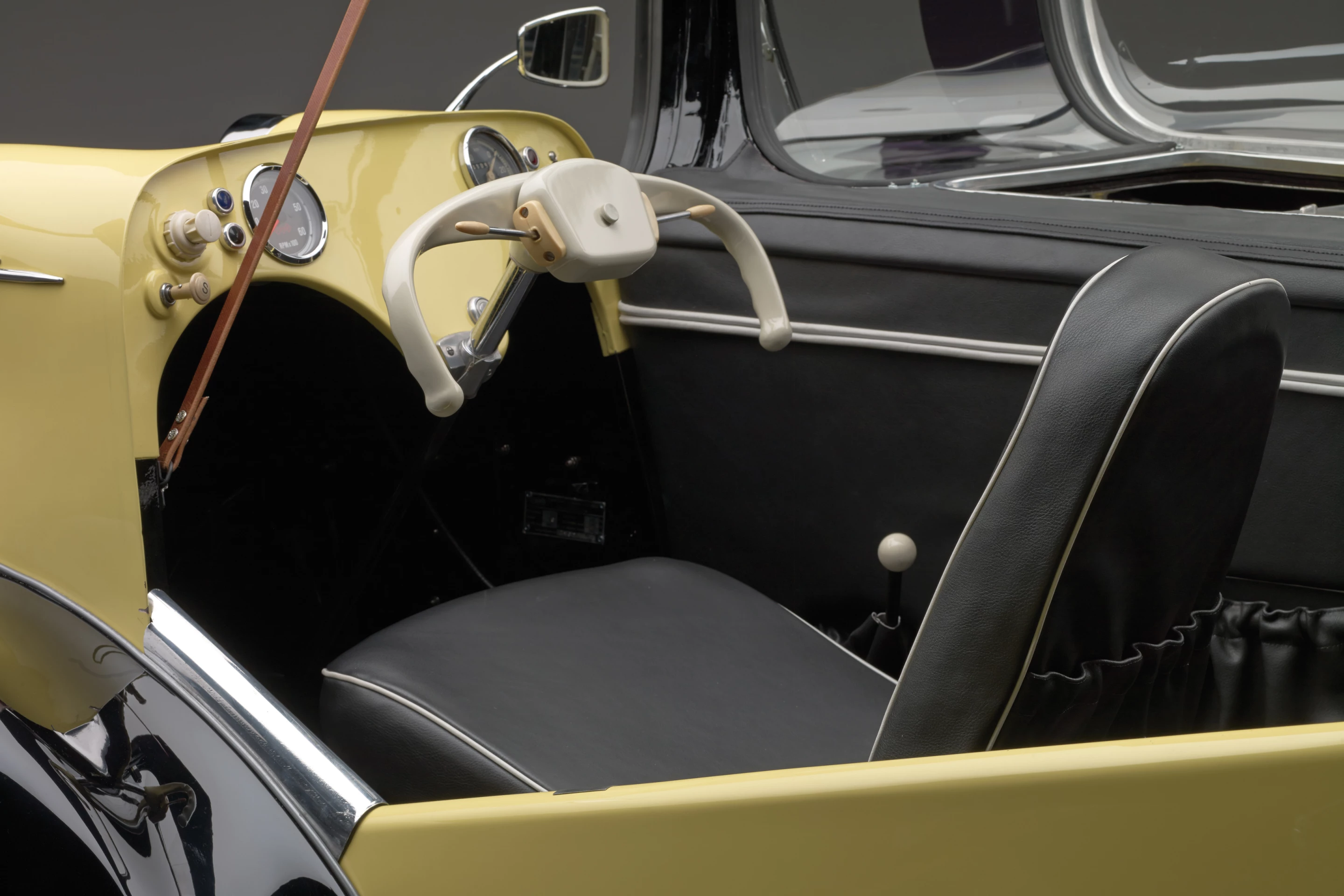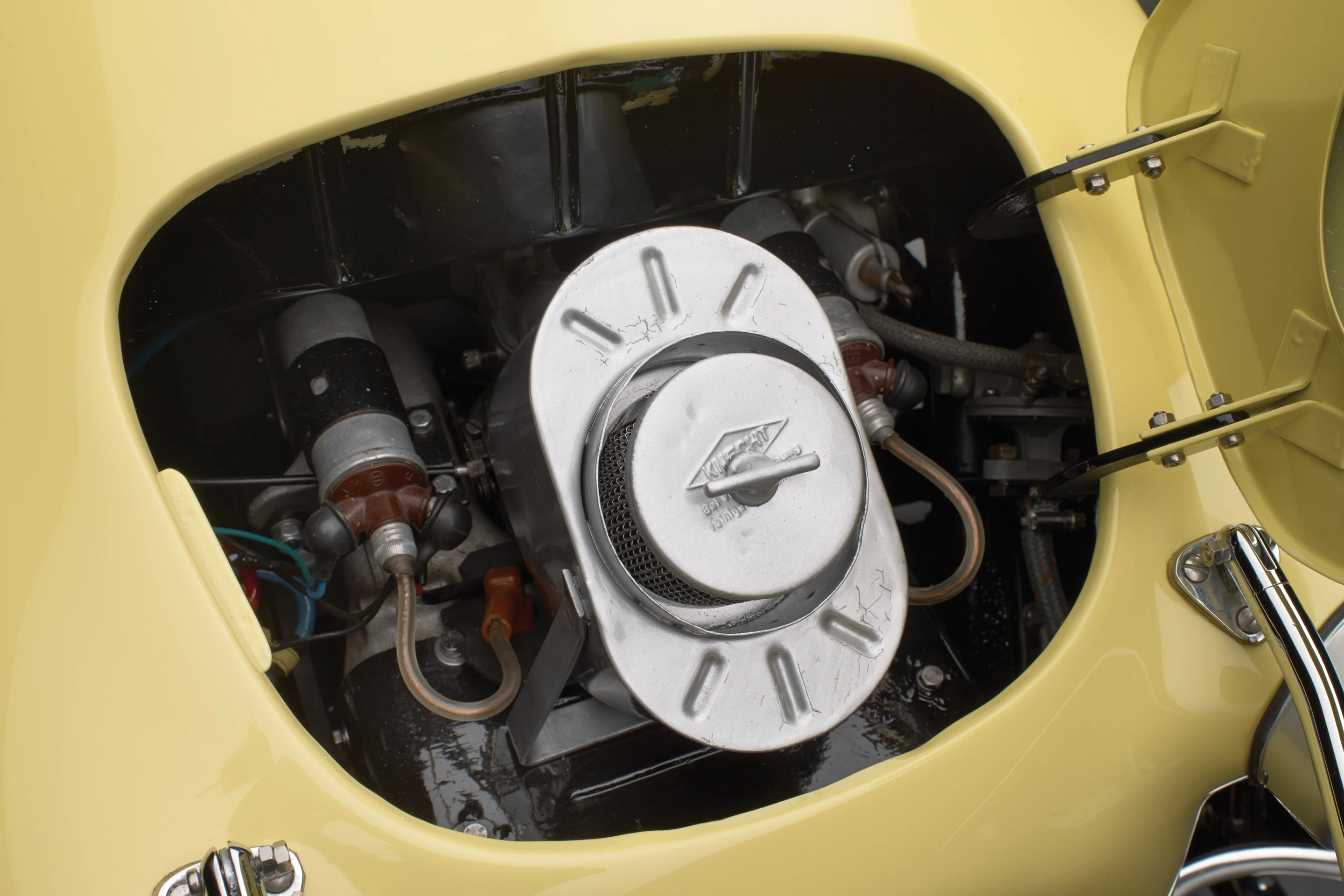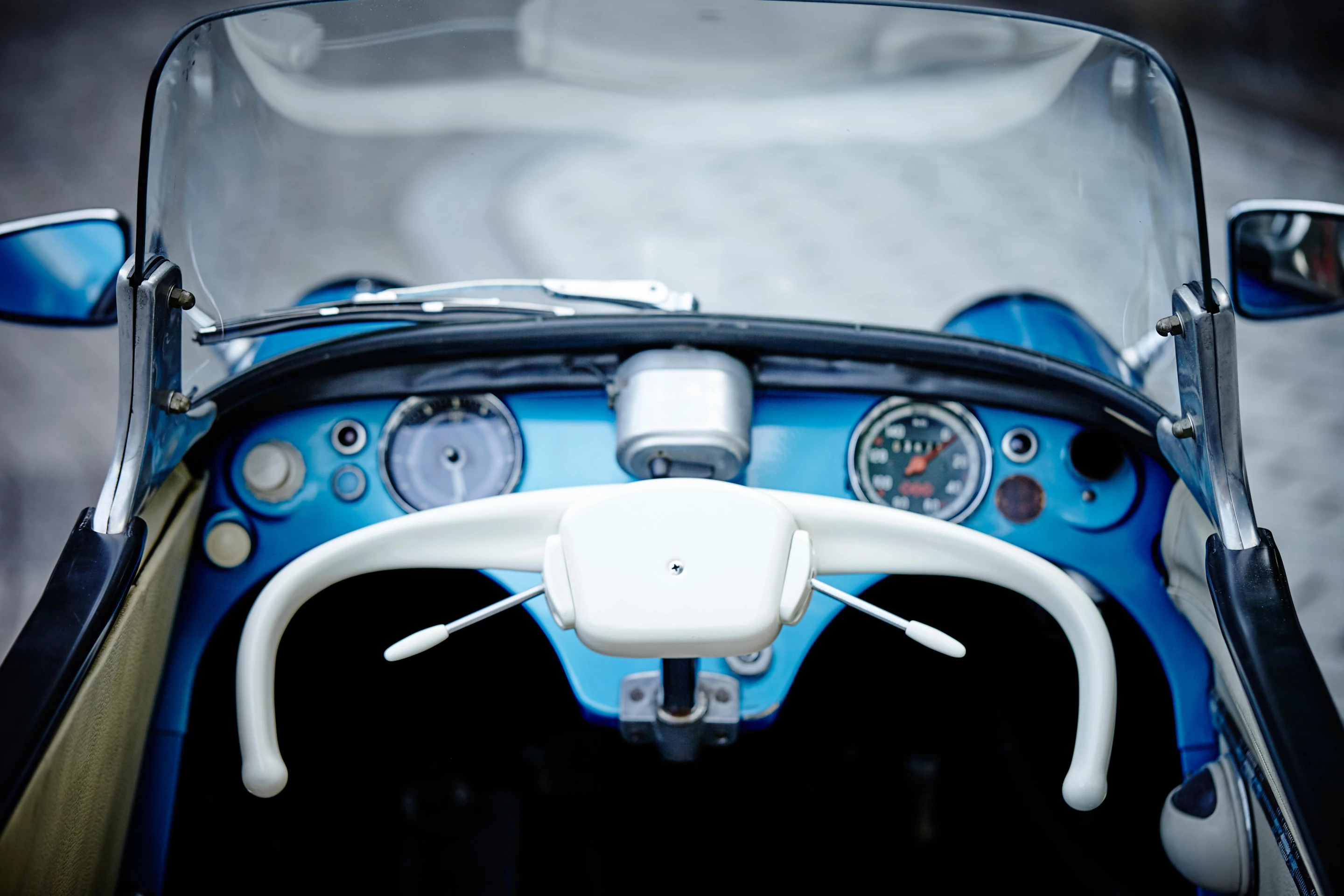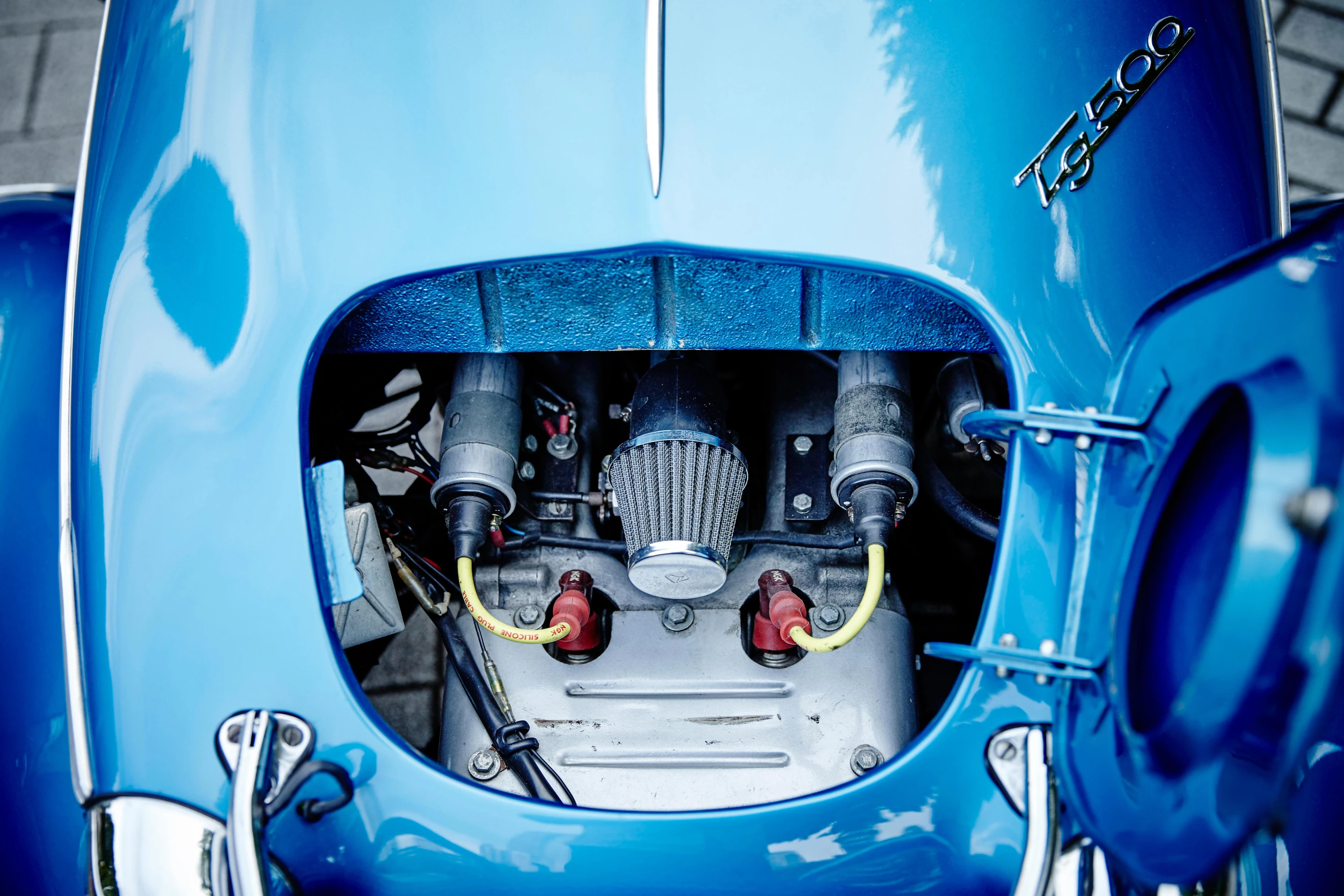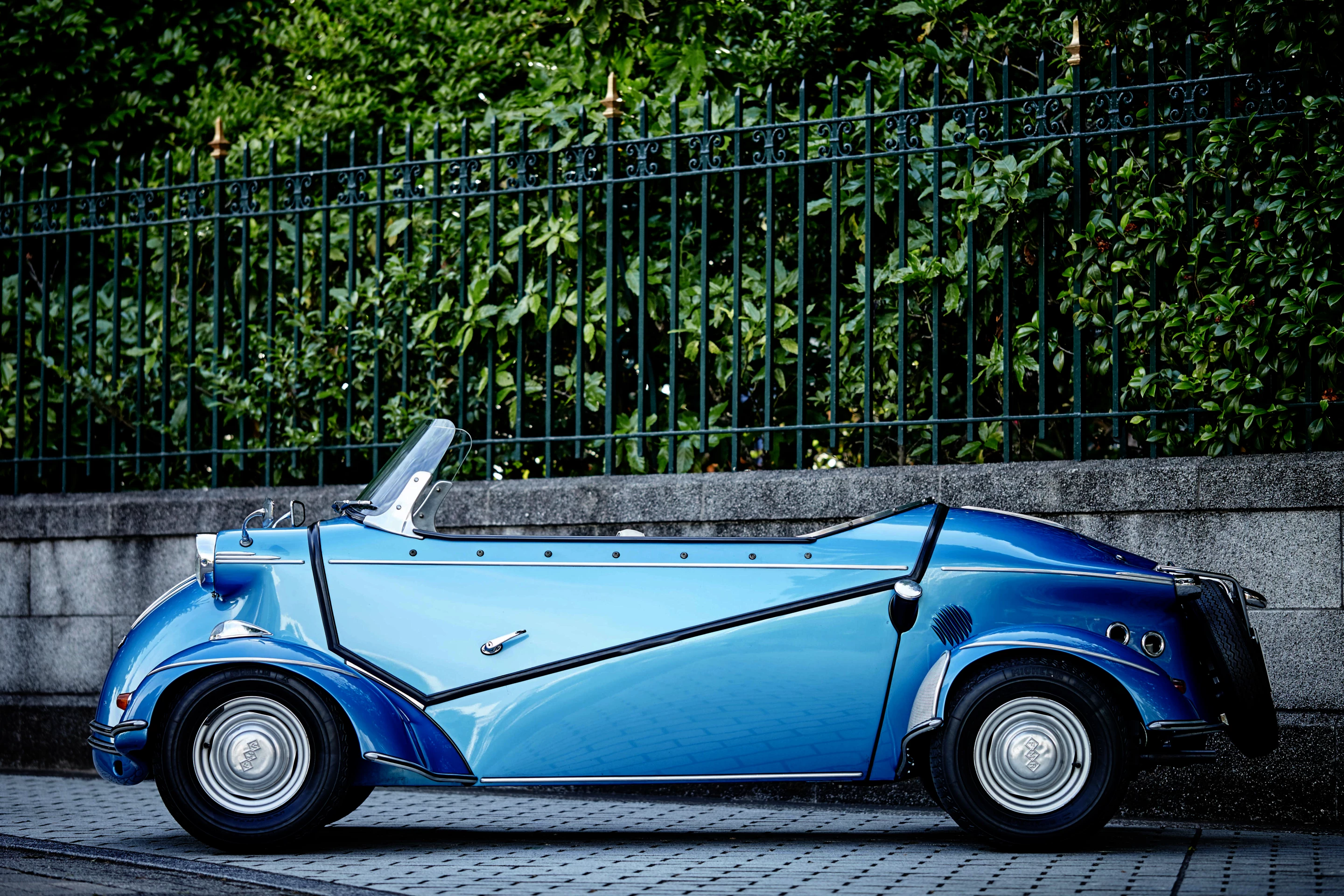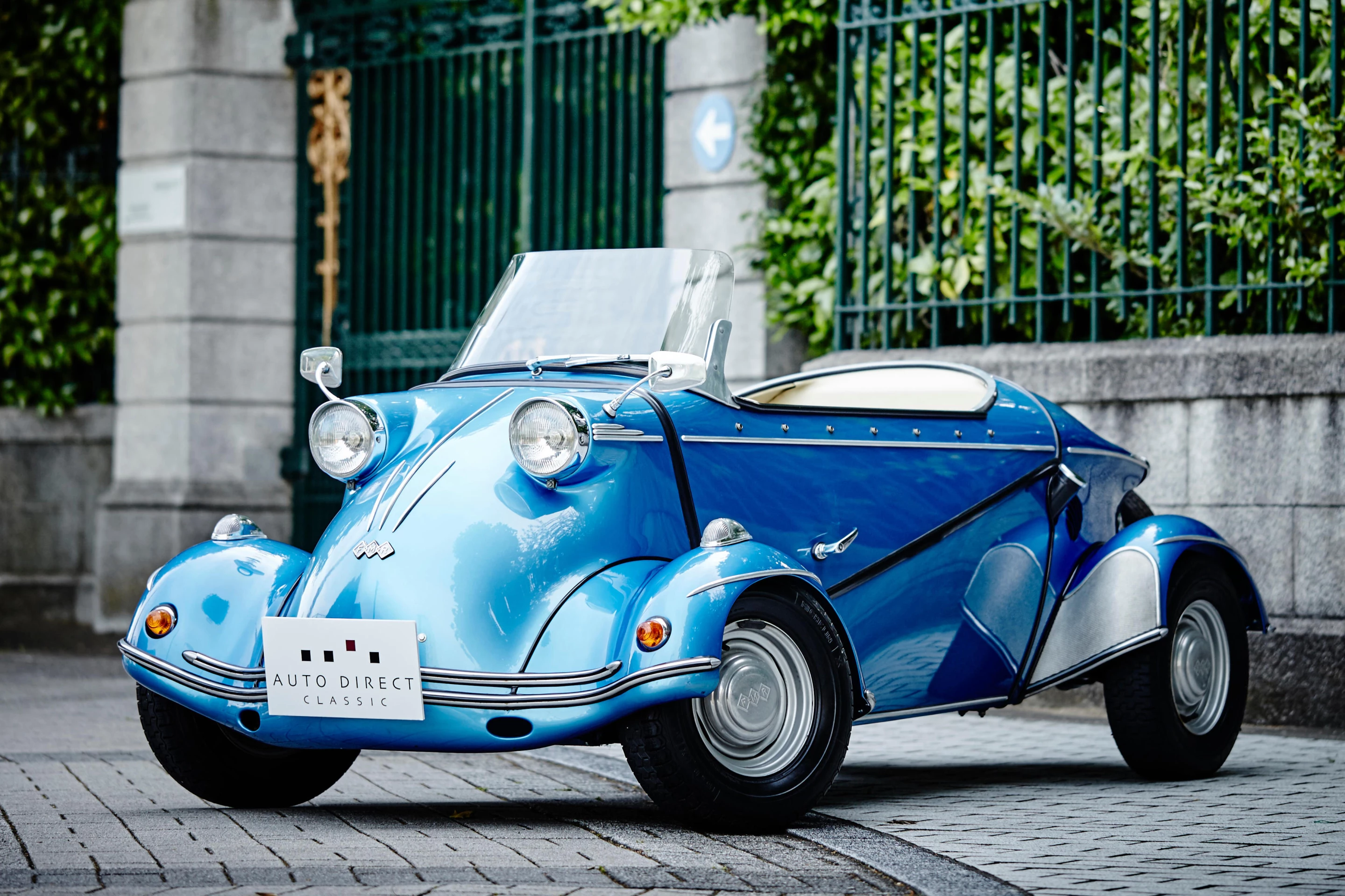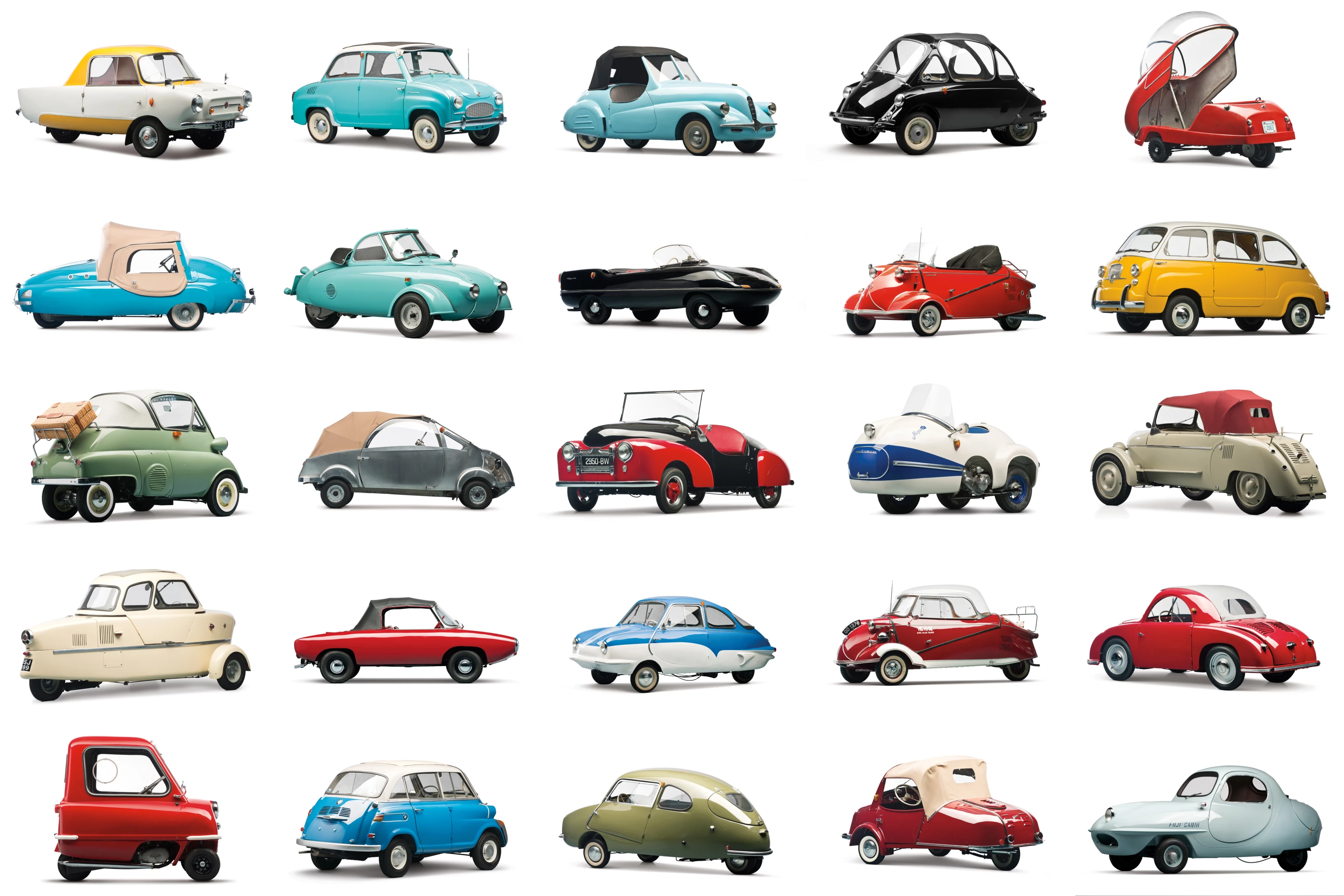In the immediate post-WW2 period, Europe had been devastated by six years of total war, 85 million souls had perished, the economy of every European country was dysfunctional, every spare scrap of metal on the continent was either shaped like a weapon of war or twisted out of shape in a bomb crater, and resources for any commercial endeavour were scarce.
Given that deprivation was almost universal across Europe, the imperative was to create cheap, economical motorized mobility solutions as the only alternative for most of the population was a bicycle or walking. Europe had bombed itself 50 years backwards.
Throughout the 1950s and early 1960s, the market’s first affordable answer to the need for personal mobility was a battalion of compact, minimalist three- and four-wheel microcars. They were very light, because consuming minimal amounts of metal was important to manufacturing costs, and to make the task of accelerating it as easy as possible for the tiny two-stroke motors that powered them.
As most of these cars were used in densely populated cities with narrow streets, performance was not a primary consideration as it is today. These cars had engine capacities measured in hundreds of cubic centimeters rather than liters, and had extremely modest performance everywhere but the gas pump. This was important because fuel rationing was commonplace until the 1950s in mainland Europe and after that it was simply very expensive. Microcars provided austerity motoring.

As the sixties progressed, and the population again grew affluent, these cars were pushed from the market, replaced by more affordable, more comfortable and slightly larger, compact (rather than micro) cars.
These days any post-WW2 micro cars extant are the domain of the collector, where you can buy a lot of character and automotive charm for not a great deal of money.
The Holy Grail of Microcars: the FMR TG500 Tiger

Every marketplace has its “Holy Grail” though, and in the post-WW2 micromobility collector marketplace, that’s the FMR (Messerschmitt) TG500 Tiger.
One of the best-known manufacturers of microcars was Messerschmitt. Forbidden to make aircraft after the war, the innovative company created micromobility machines of the highest order with its advanced technologies and manufacturing. Each microcar created by the company was a direct descendent of the Messerschmitt Bf 109 fighter aircraft that had been the backbone of the German military’s Luftwaffe air wing just a few years earlier.
The first three-wheeled Messerschmitt KR175 premiered at the 1953 Geneva Motor Show with 11,000 units produced before the new and improved KR200 was introduced in 1955. In 1957, Messerschmitt’s automotive branch was purchased by the German Government and renamed FMR.
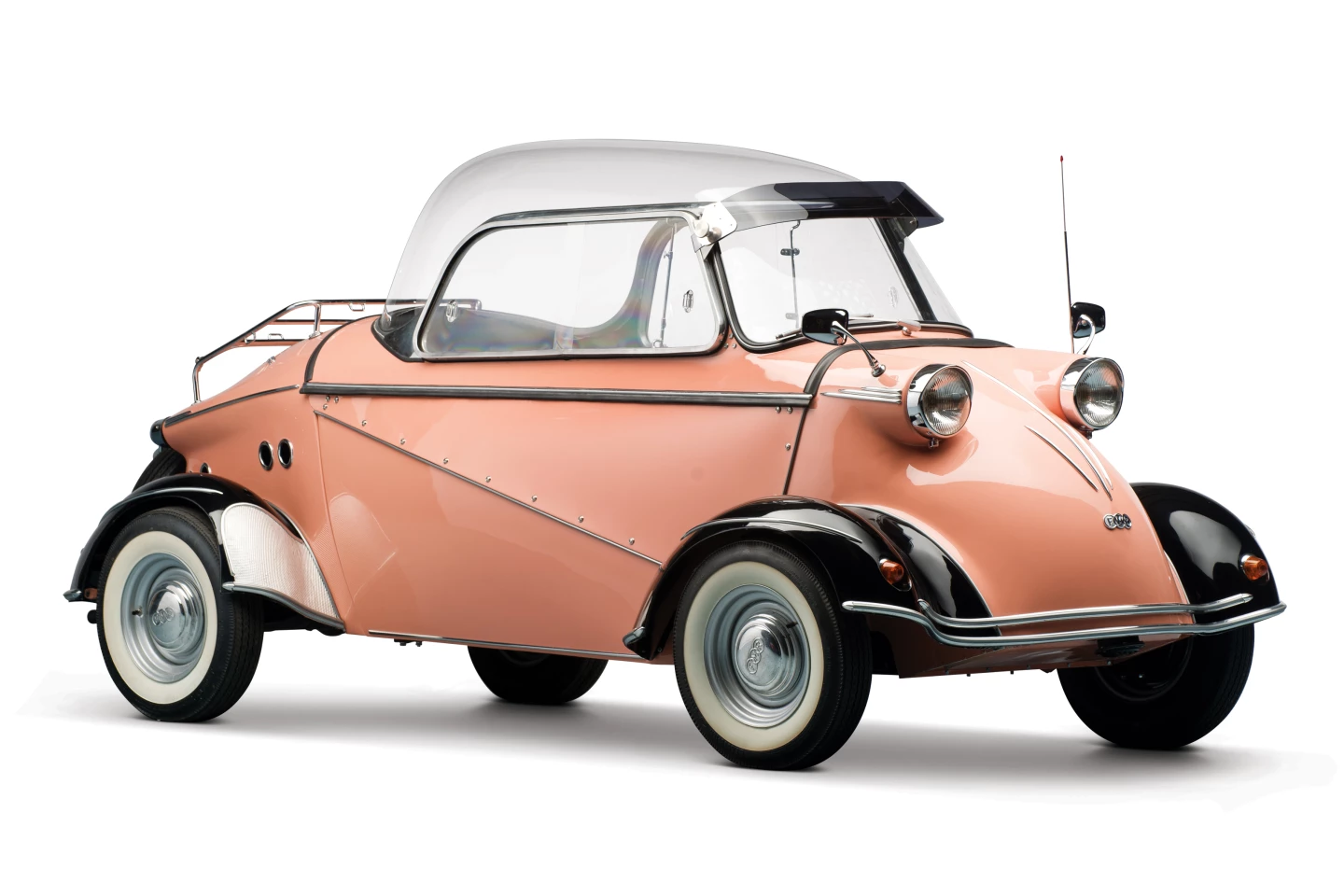
The company’s last model was the TG500 Tiger. It was designed by German engineer Fritz Fend, just as the KR175 and KR200 had been, except the Tiger was equipped with four larger wheels, larger brakes, larger front suspension arms, larger headlamps and a larger engine.
The Tiger was aptly named as it became the ultimate performance variant of the entire microcar market. Where most such cars had anaemic 125cc to 200cc engines that would struggle to pull the skin off a rice pudding, the TG500 Tiger ran a 500cc two-stroke twin cylinder engine that could accelerate it briskly to 80 mph (129 km/h).
Unlike the car it was developed from, the three-wheeled Messerschmitt KR200 Kabinenroller (Cabin Scooter), the TG500 was produced in very limited quantities, with 320 sold and less than half of those believed to exist to this day.
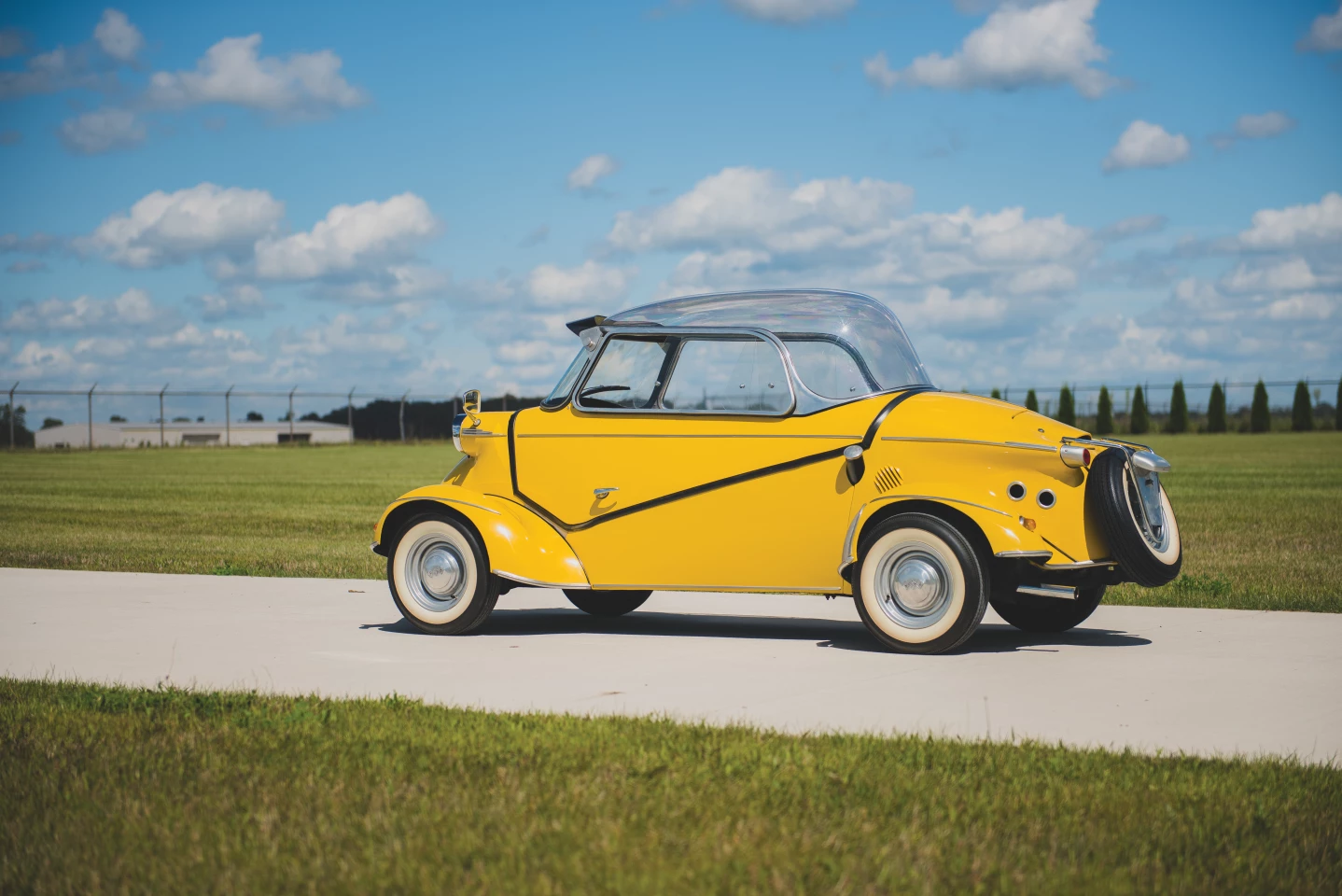
The remaining TG500 Tigers must be very closely held because they rarely appear at auction, with just four selling in the last decade: a black 1960 model at Bonhams’ Goodwood Revival sale in 2013 for GBP £82,140 ($130,400), a yellow 1960 model at RM-Sotheby’s in 2013 for $137,500, a blue 1959 model at Bonhams at Quail Lodge (Monterey) in 2015 for $165,000 in 2015, and holding the model record is a rose 1958 model that fetched $322,000 at the auction of the Bruce Weiner Microcar Museum in February 2013.
A salmon-colored 1959 model went to auction at The Finest Automobiles (now defunct) in Boca Raton in 2017 with an estimate of $250,000 to $325,000 but failed to meet reserve.

Just what the latest car to come to auction might fetch will be interesting to watch. Though the TG500 model is unquestionably the most valuable microcar model in the world, the $322,000 result remains an outlier and the next three sales are grouped around $130,000 to $165,000.
One final thought on the car concerns its two-stroke engine. Our analysis of the motorcycle market shows that collectors generally shun two-stroke motorcycles.
Depending on the depth you wish to go to, two-strokes make up more or less than one percent of the collector motorcycle market (v-twin four-strokes constitute more than 75 percent and v-configuration engines more than 80 percent)
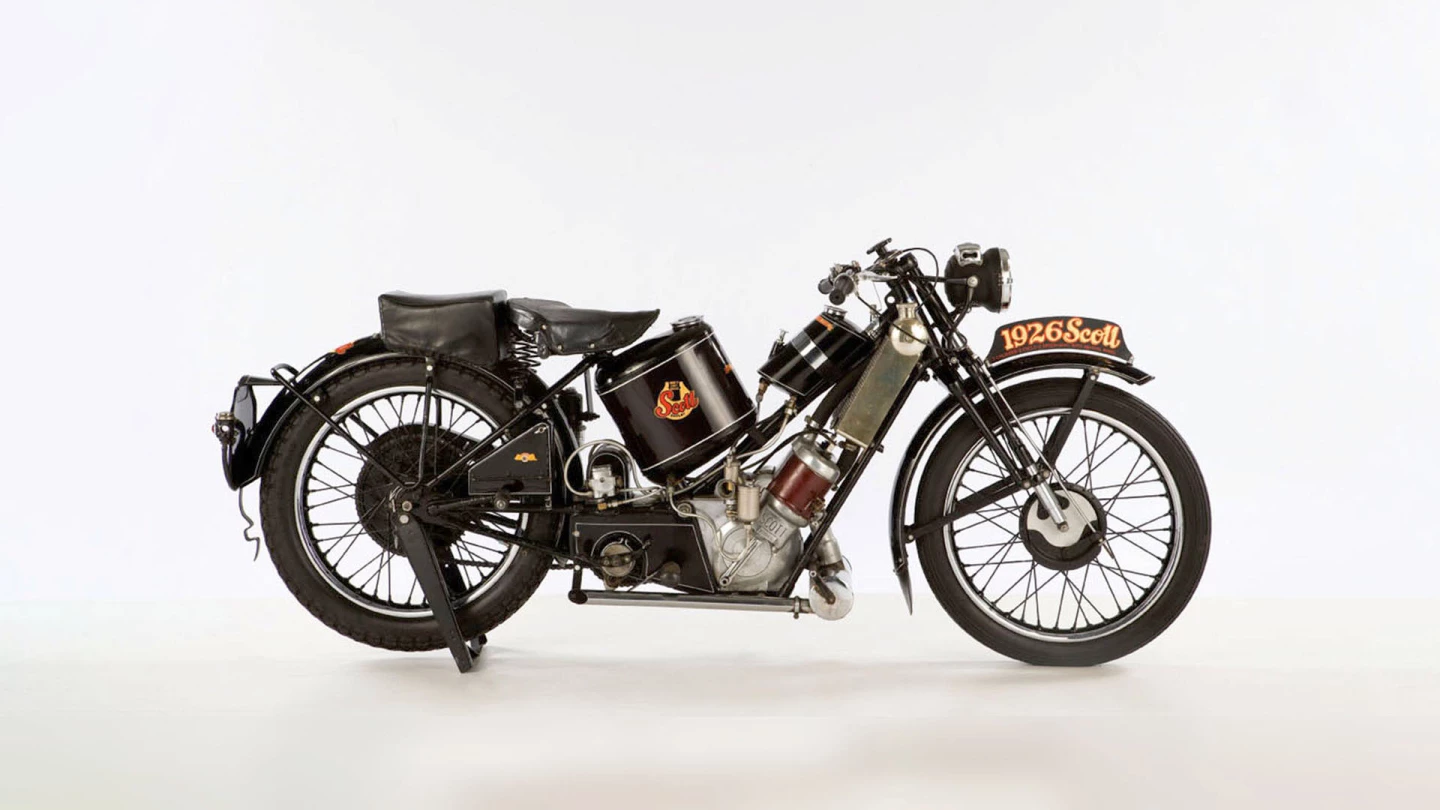
Only four motorcycles with a two-stroke engine are in the top 250 most valuable motorcycles ever sold at auction. Three of them have been owned by Steve McQueen (two Husqvarna dirt bikes and a Scott Flying Squirrel) and the other a world-title-winning Aprilia RSW250, with the most expensive being the Scott (above), which fetched $276,000.
As far as we can ascertain, at $322,000 the TG500 model record holder sold by RM-Sothebys in 2013 is the most valuable two-stroke car that has ever been sold at auction, which makes the TG500 the most expensive two-stroke that has ever been sold ... anywhere, any time, EVER!
The Elkhart Collection has a fascinating and eccentric mix of 240+ landmark automobiles and 30+ motorcycles that cover a very wide spectrum. Clearly the private individual who compiled the collection has eclectic tastes and equally as clearly, loves the microcar concept. The collection includes not just the ultimate FMR TG500 Tiger, but all three prior Messerschmitt variants: a 1955 Messerschmitt KR 175, a 1956 Messerschmitt KR 200 and a 1958 Messerschmitt KR 201 Roadster.
RM Sotheby’s two-day sale of The Elkhart Collection was originally scheduled for 1-2 May 2020, but will now be held 23-24 October 2020.

